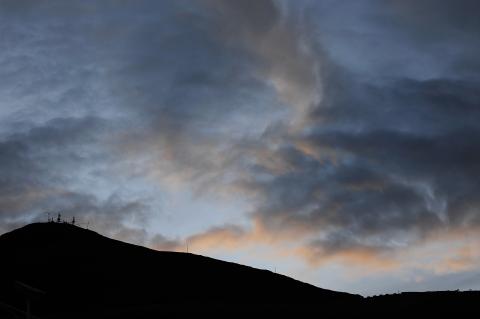
DAY5 Return to Yamdrok Yumco
In the morning, I walked alone to the Yangtze Lake. In the silence, there was only my own breathing and heartbeat. A glimmer of morning glow appeared in the sky, but it was quickly covered by clouds.
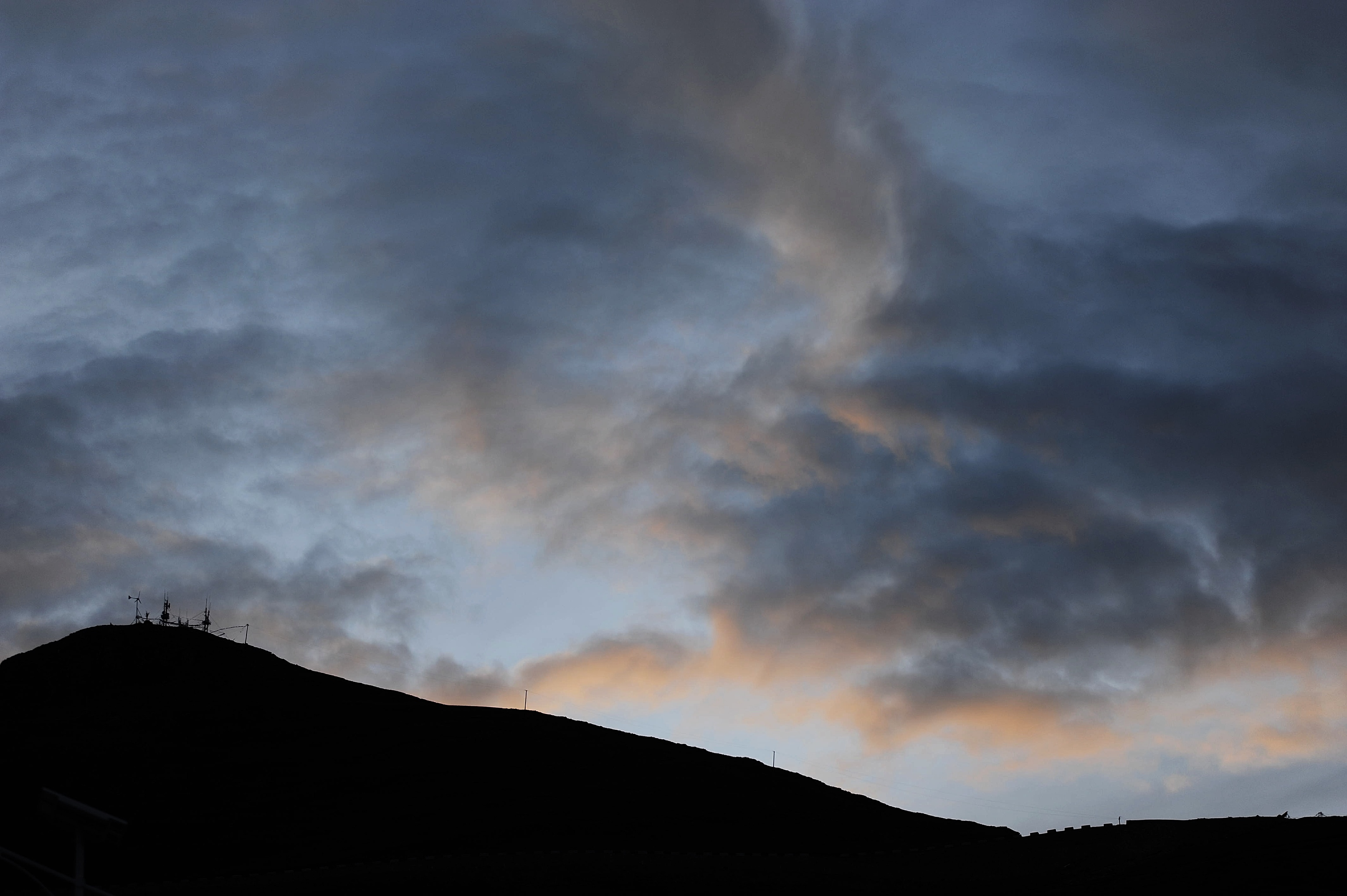
The sleeping fishing boats by the lake are very strange, because Tibetans do not eat fish, especially fish from the holy lake. Later, when I asked Pubu, I learned that there was a time when plateau naked carp were caught in the lake and sold to tourists from the mainland, but the government later stopped it.
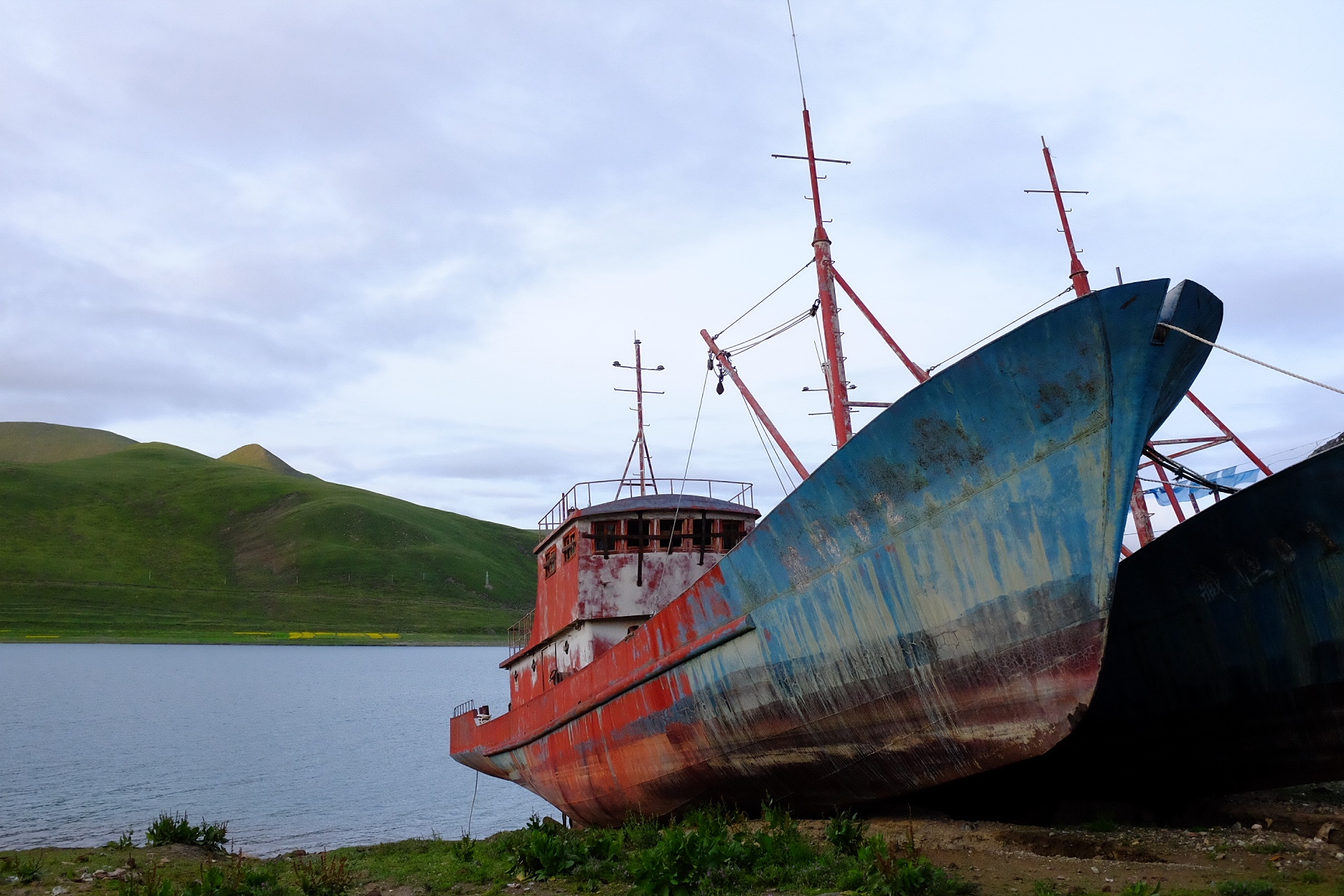
The weather was bad and there was nothing to take pictures of. When I came back, Pubu had already started making tea and preparing breakfast. This method of making butter tea has been simplified. I still like to make butter tea using the traditional method, but it is indeed more troublesome.
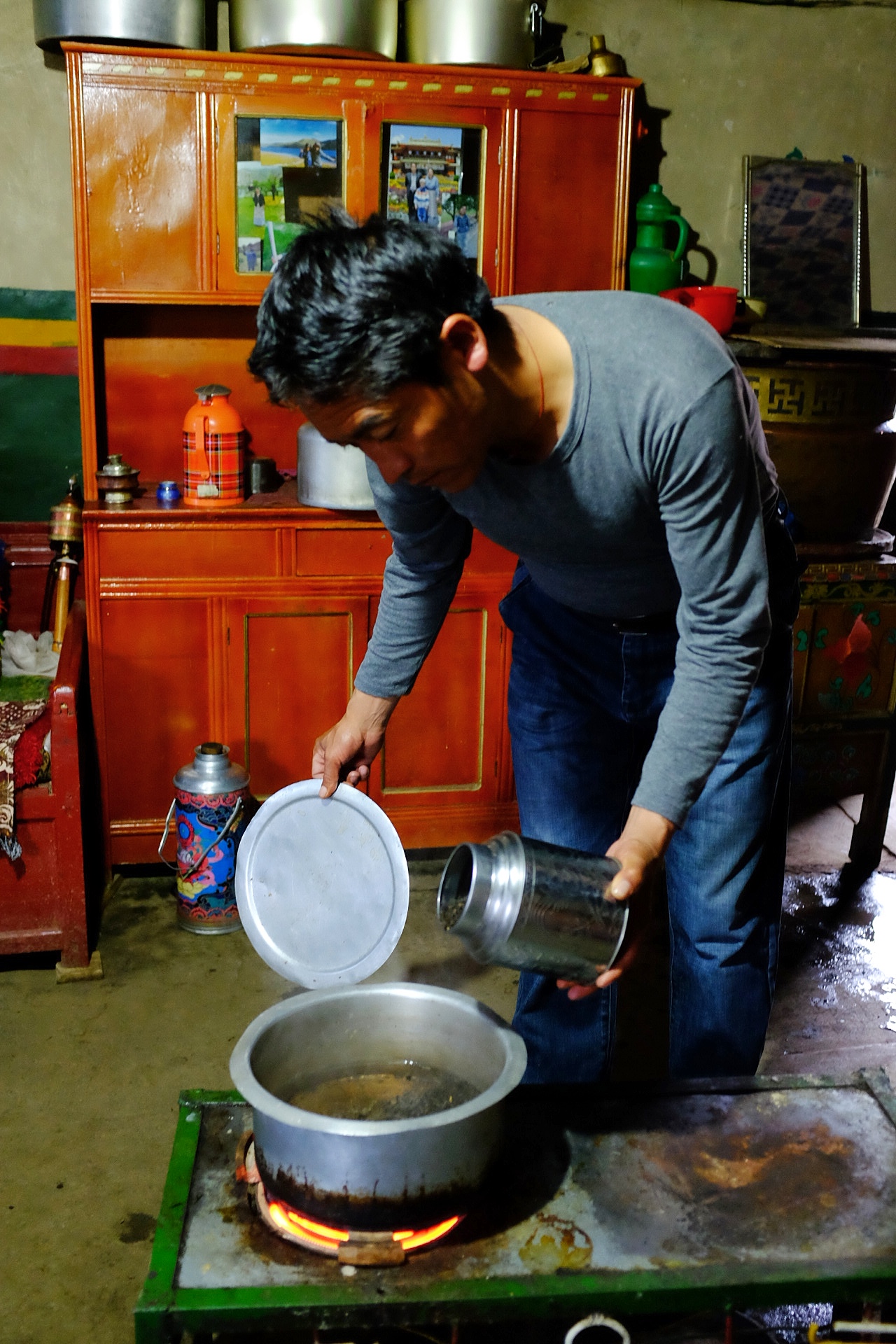
Pubu's mother was feeding her livestock in the yard. The calf had a good appetite and would not let go after eating.
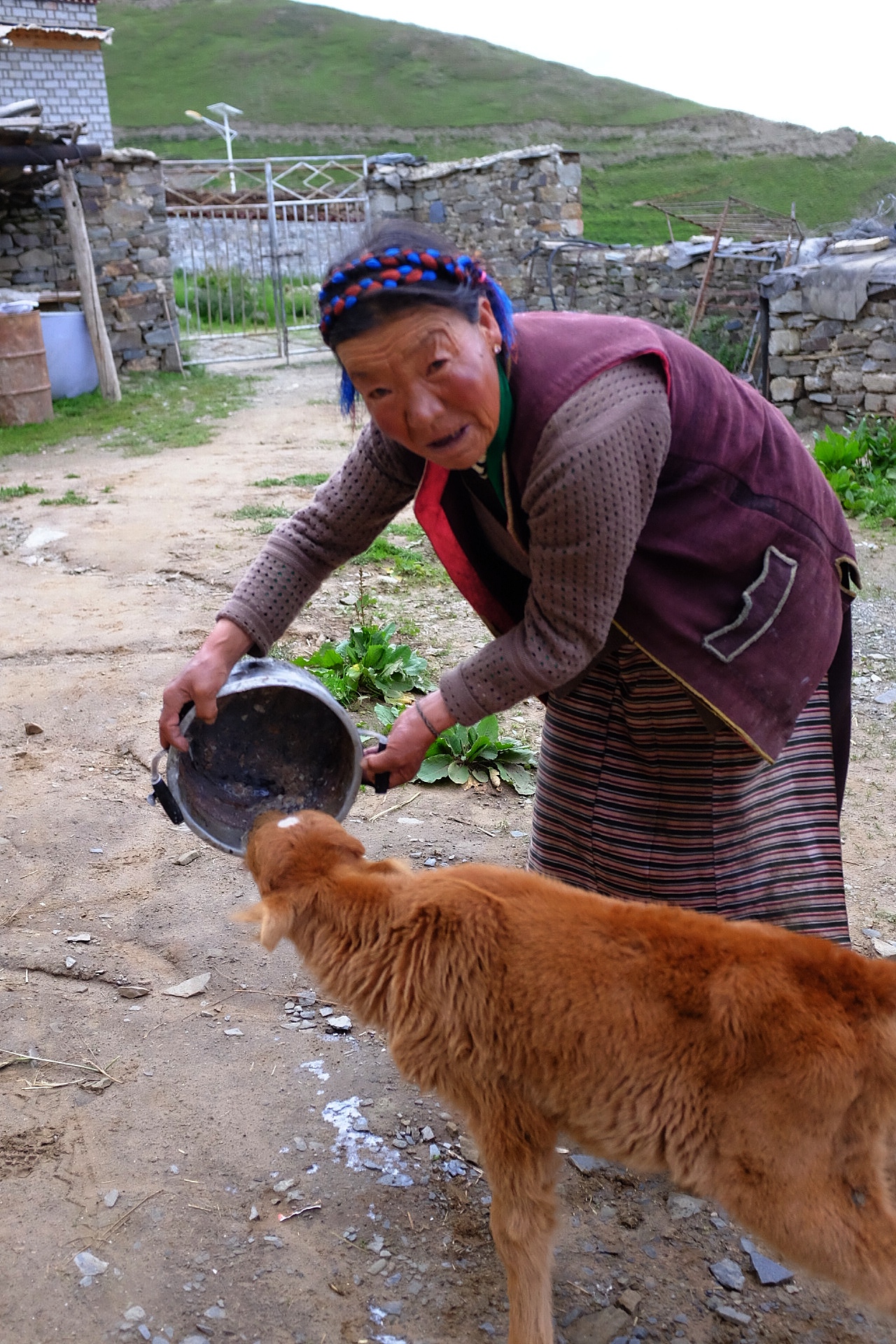
When my daughter got up, she went to find Pubu’s Tibetan Mastiff. When I came out with my camera, she had already touched the Tibetan Mastiff’s head and said: So good! The cake seller is more afraid of dogs than me!
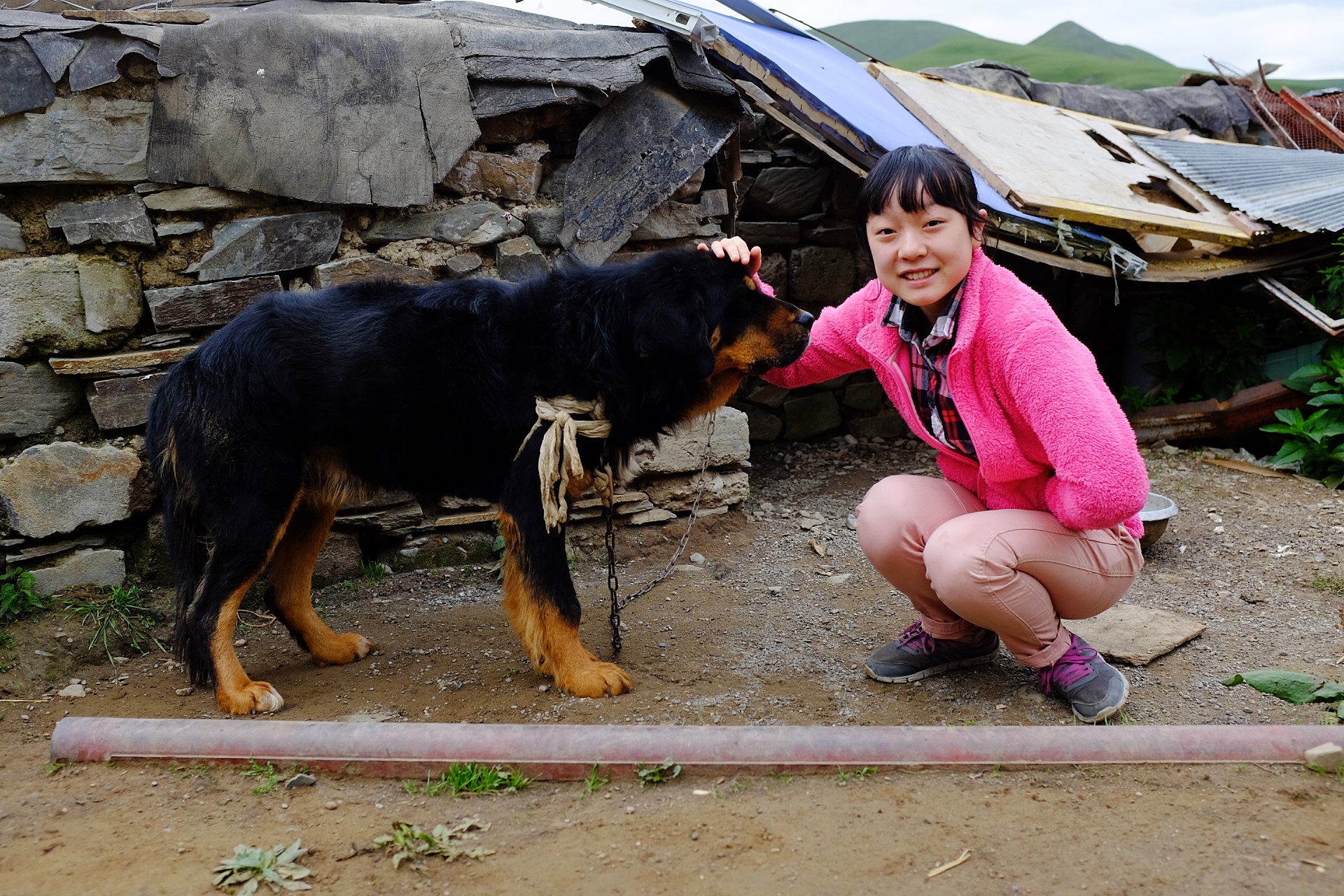
After breakfast at Pubu’s house, we continued on our way. I am hesitant to go to Shigatse, because if I go, it will be too late to rush back to Lhasa today. When I left Lhasa a few days ago, I had already booked a room to stay in Lhasa today as planned and paid the full price, because this season Lhasa is short of beds and not people. Yesterday, a friend from Chengdu called and said that he saw on the Internet that the road in Nymu County, which is the only route from Shigatse to Lhasa, has been blocked by a landslide, and he didn't know if it could be opened. I can’t make up my mind, so I’d better go to Gyantse first. There are also Khayala Glacier and Naqin Kangsang to see on the way.
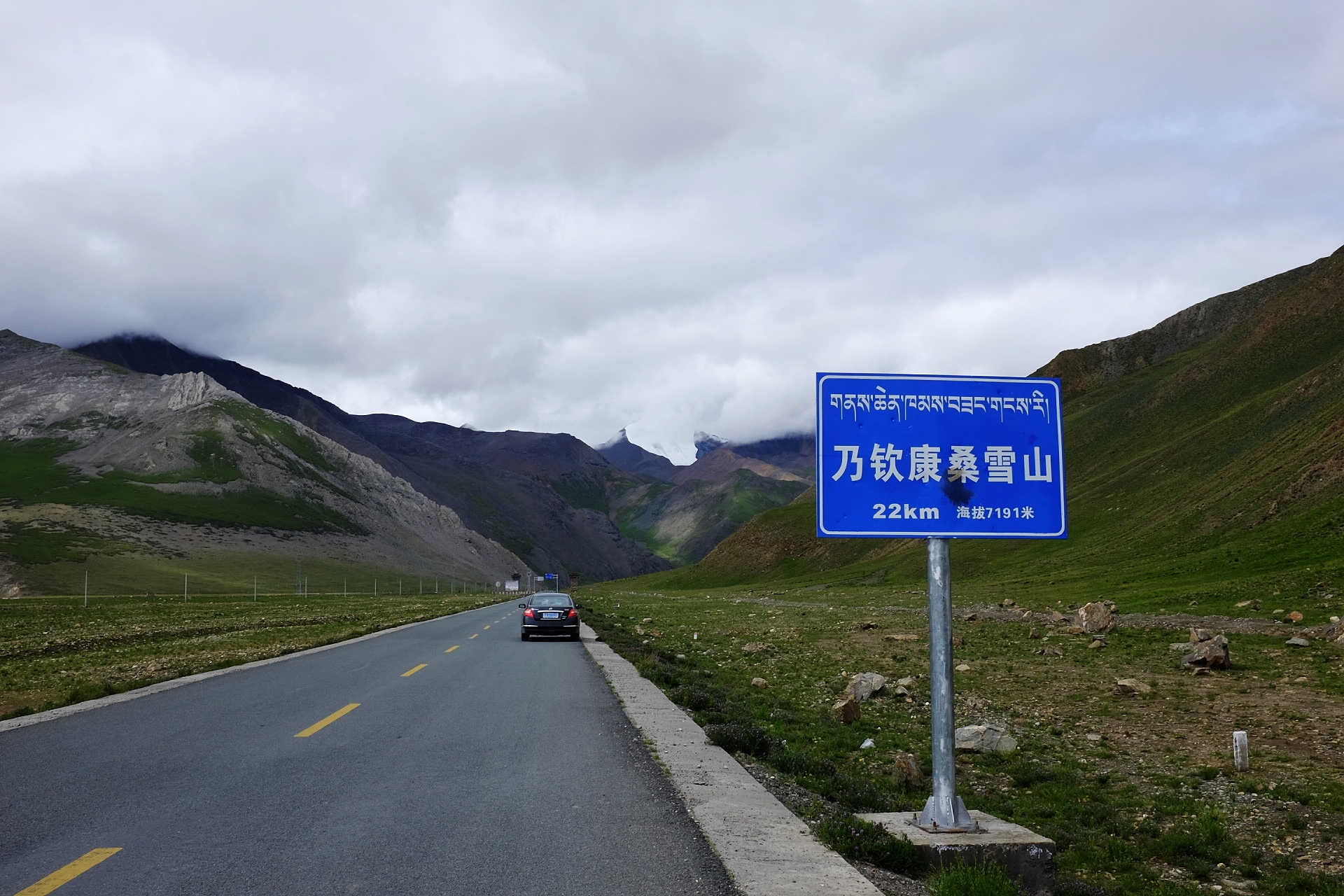
Driving along the lakeside road of Yanghu Lake, the weather was still bad. The weather on the plateau usually gets better at noon and afternoon, and the Yanghu Lake without light is very ordinary. Soon after we left Yanghu and arrived at the checkpoint in Langkazi County, my daughter went to check the speed limit and said to herself: They won’t fine us for exceeding the time limit. We all slept all night.
After leaving Langkazi County, we began to enter the mountains. Snow-covered peaks and glaciers began to appear on the roadside, and the altitude exceeded 4,000.
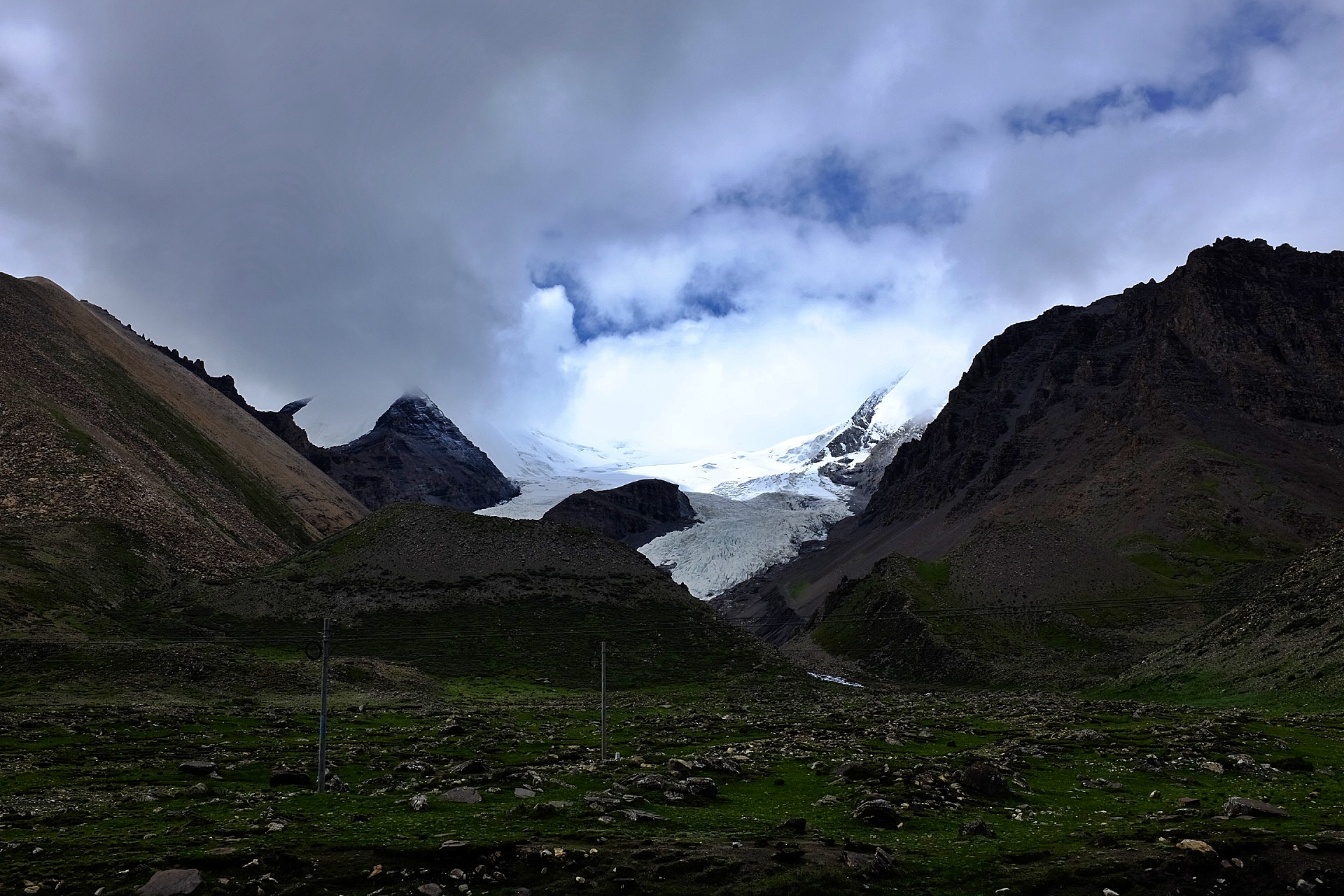
As we approach the Khayala Glacier, we can already see ice tongues on the mountainside beside the road.
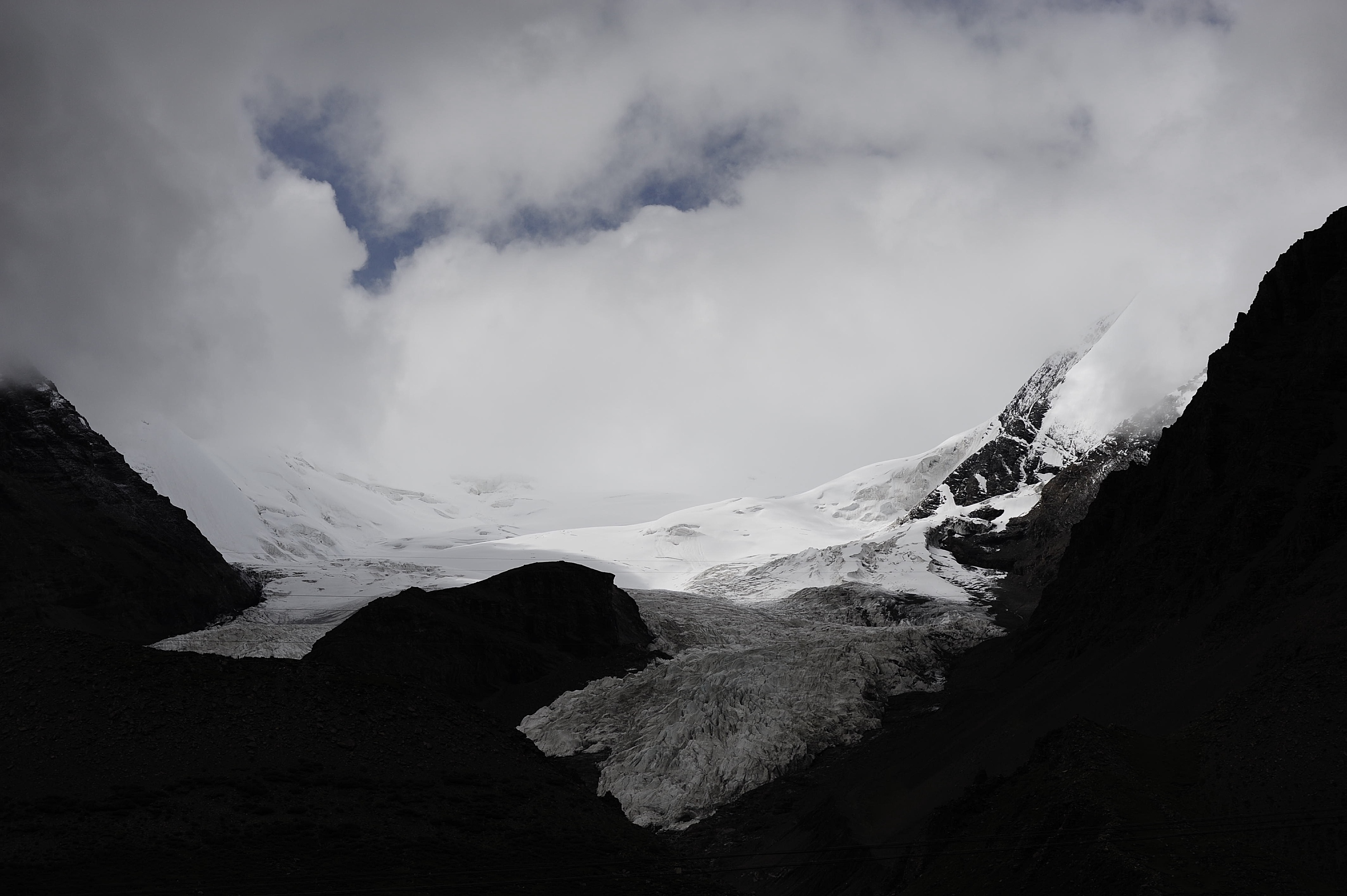
I didn't dare to stop when I passed the viewing platform of Kajala Glacier because the big words said "Parking fee is 25 yuan". I drove past the viewing platform and stopped on the side of the road. I got out of the car as fast as I could and took a photo. Leave before the Tibetans from the observation deck rush towards us. The current Khajala Glacier is receding rapidly. In the past, the glacier tongue was just on the roadside.
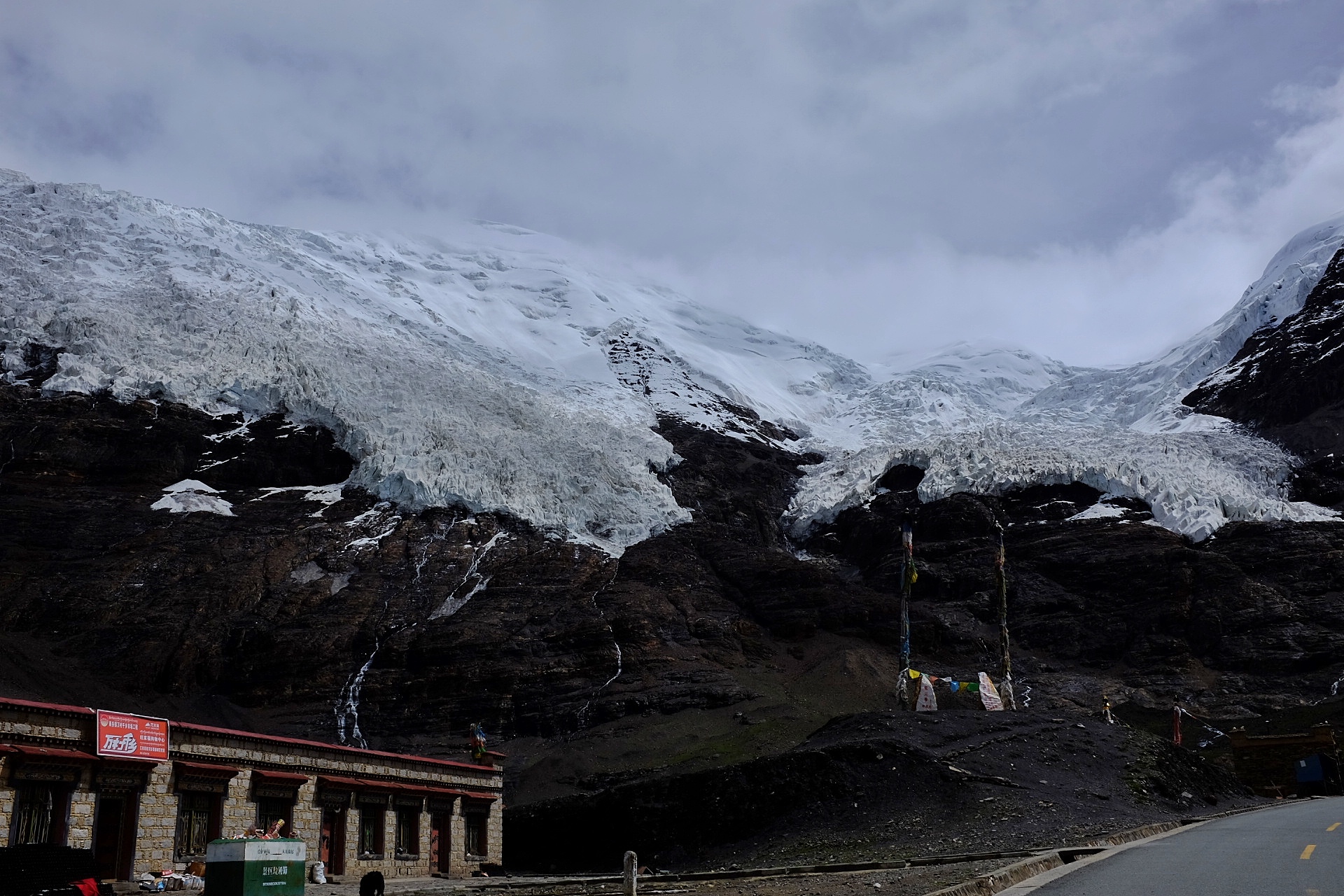
There were no stops along the way, and my daughter quickly entered the in-car sleep mode again. I really admire her ability to sleep so well. I actually enjoyed running all the way on the plateau landscape avenue.
When we arrived at the Gyantse checkpoint, we checked the speed limit sign again. After that, we were still not allowed to leave, saying that we would wait until the leader's convoy passed before leaving. Damn, didn’t President Xi say that road closures are not allowed! Also, do they have a speed limit? Of course, no one paid any attention to me.
Gyantse is still very famous. The most famous one is Baiju Temple, then the Zongshan Castle, and of course the tranquil famous "Red River Valley". At that time, the British army invaded Tibet from India through Yadong and fought until Gyantse was met with bloody resistance by Tibetan soldiers and civilians.
Baiju Temple is a temple where the three major sects of Tibetan Buddhism, the Sakya Sect, the Kadam Sect, and the Gelug Sect, coexist. Since Baiju Monastery was established when various sects in Tibet were competing against each other and were evenly matched, it was able to bring together Sakya, Gelug, Kadam and other sects to peacefully coexist in one temple, which gave it a special status in the history of Tibetan Buddhism. and impact.
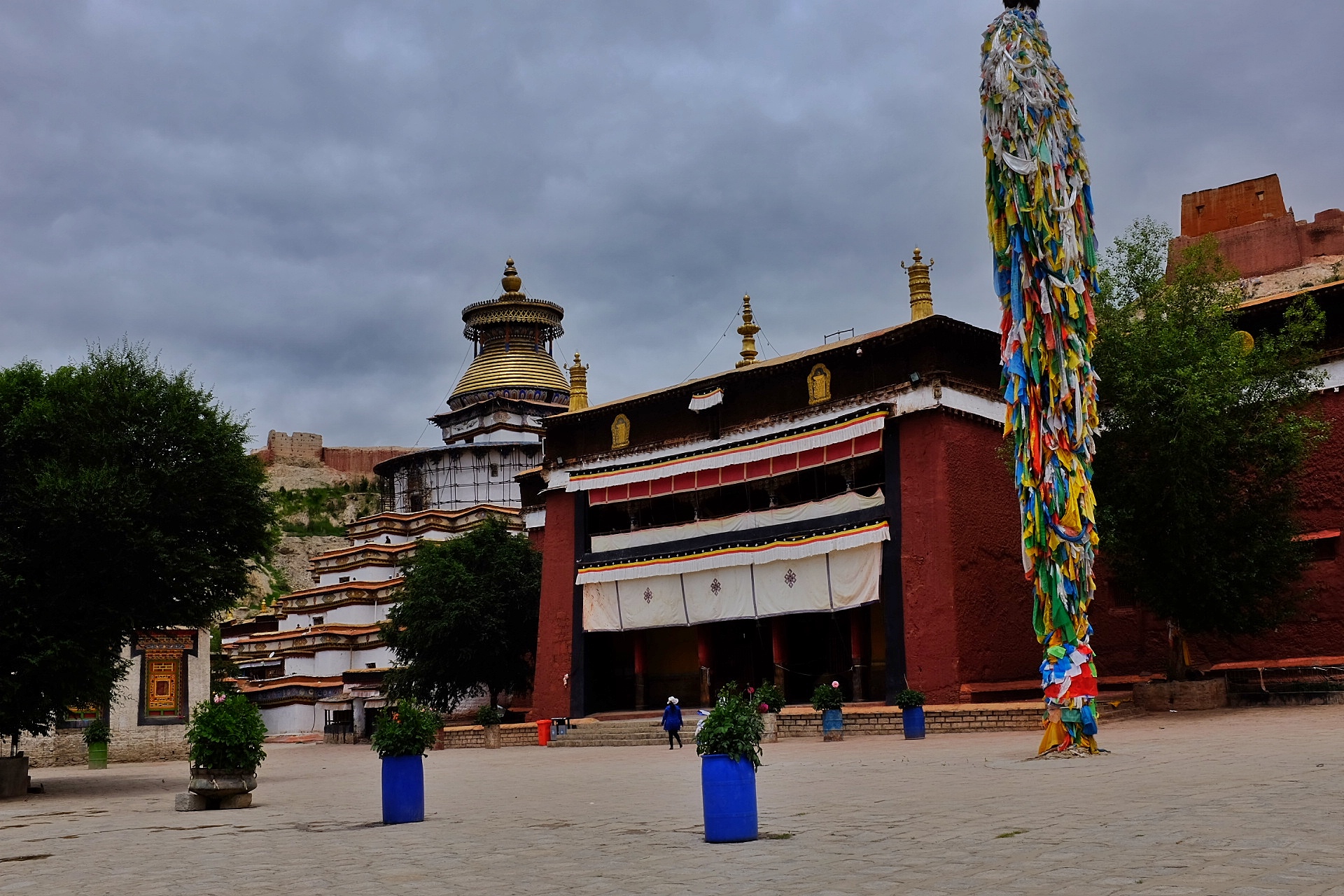
The Baiju Pagoda next to Baiju Temple is known as the "One Hundred Thousand Pagodas". It is because of this Pagoda that Baiju Temple is particularly charming. This is no ordinary pagoda (special reminder: it is a pagoda built with nearly a hundred Buddhist halls one after another.) The pagoda has nine floors and is more than 32 meters high. It has 77 Buddhist halls, 108 doors, shrines and sutras. Hall, etc., are unique treasures in the history of Chinese architecture. There are more than 100,000 Buddha statues painted in the hall, hence the name 100,000 Buddha Pagoda.
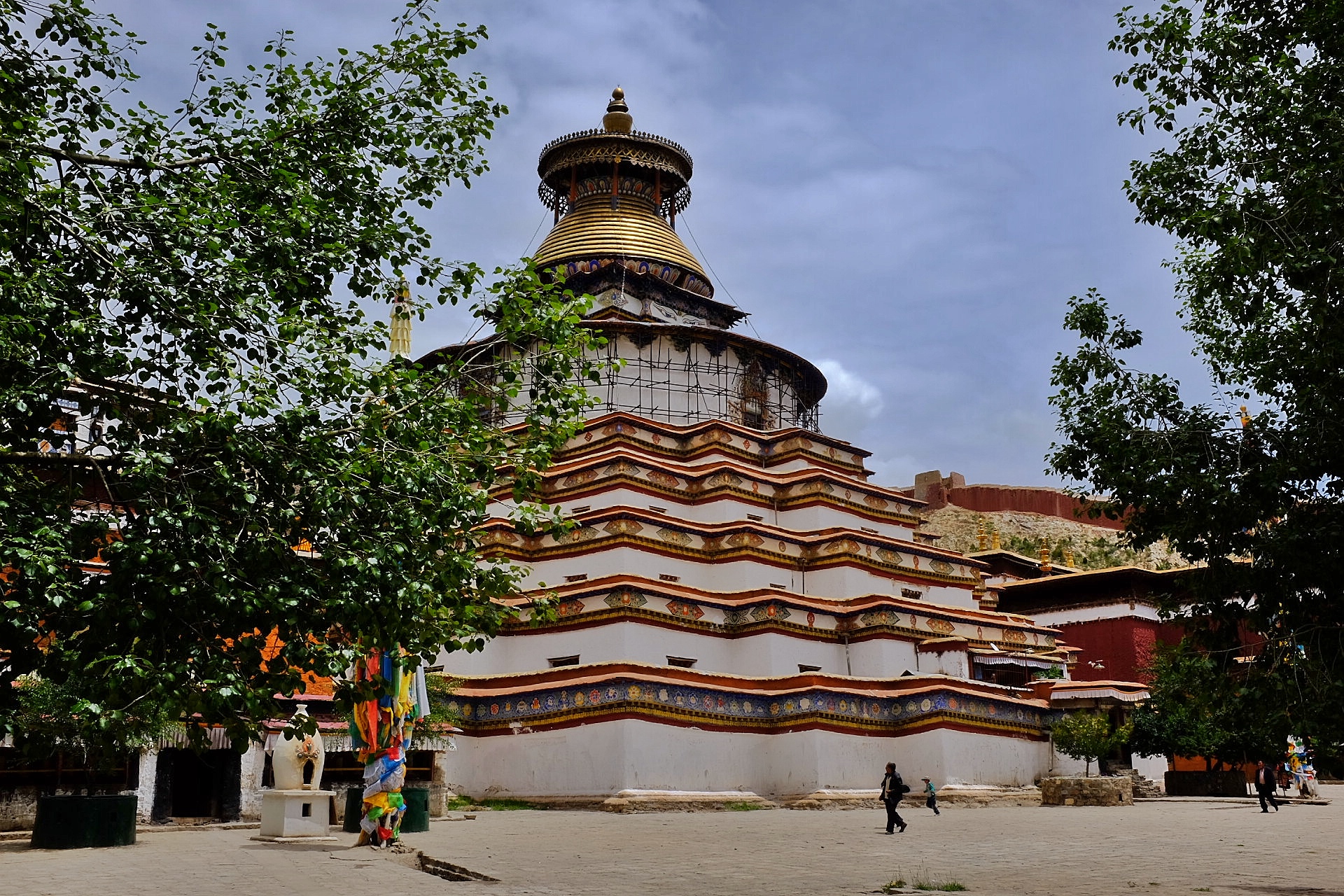
The wooden scaffolding that maintains the pagoda has a dedicated passage for praying.
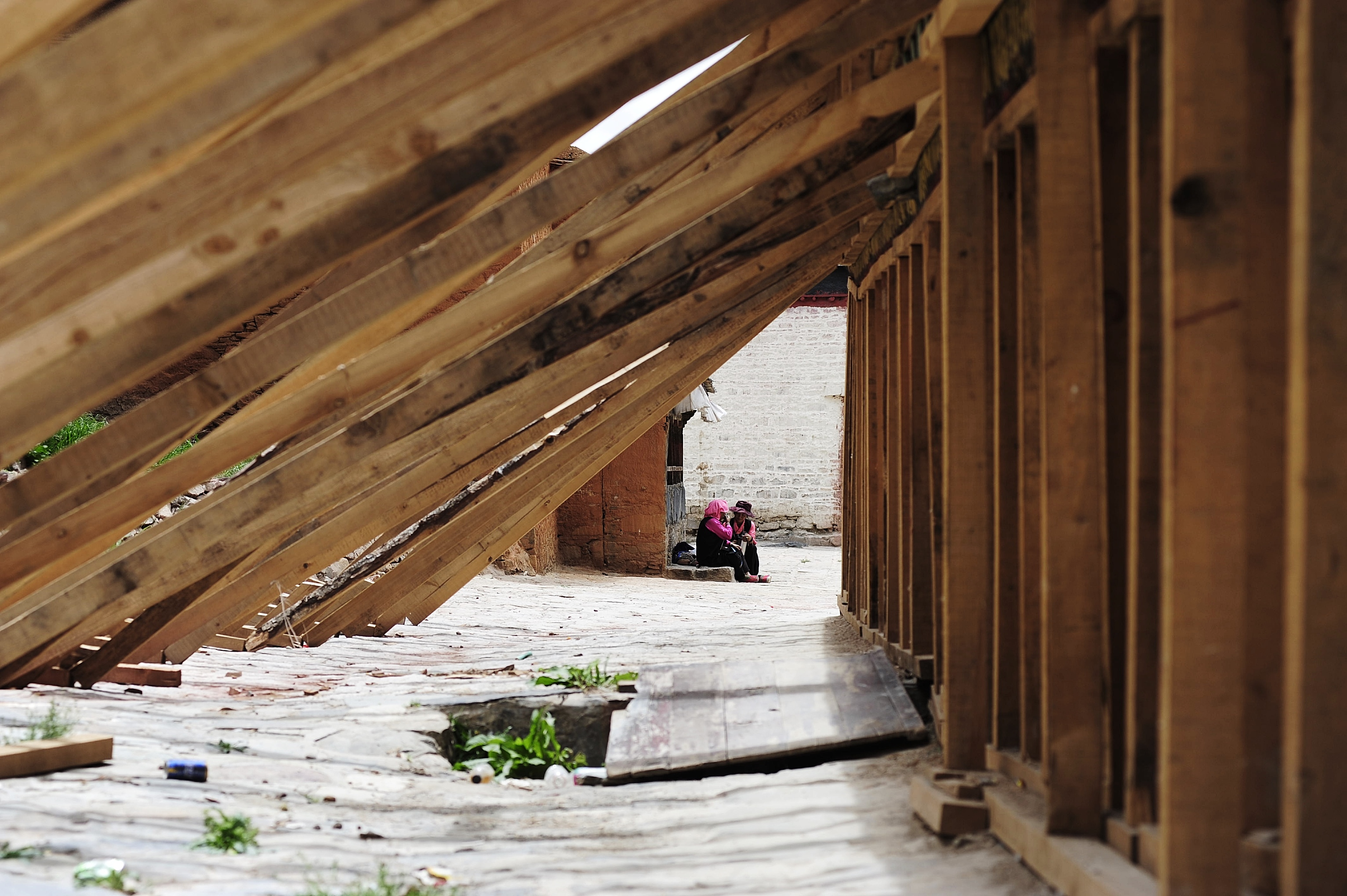
The herdsmen who turn to pray
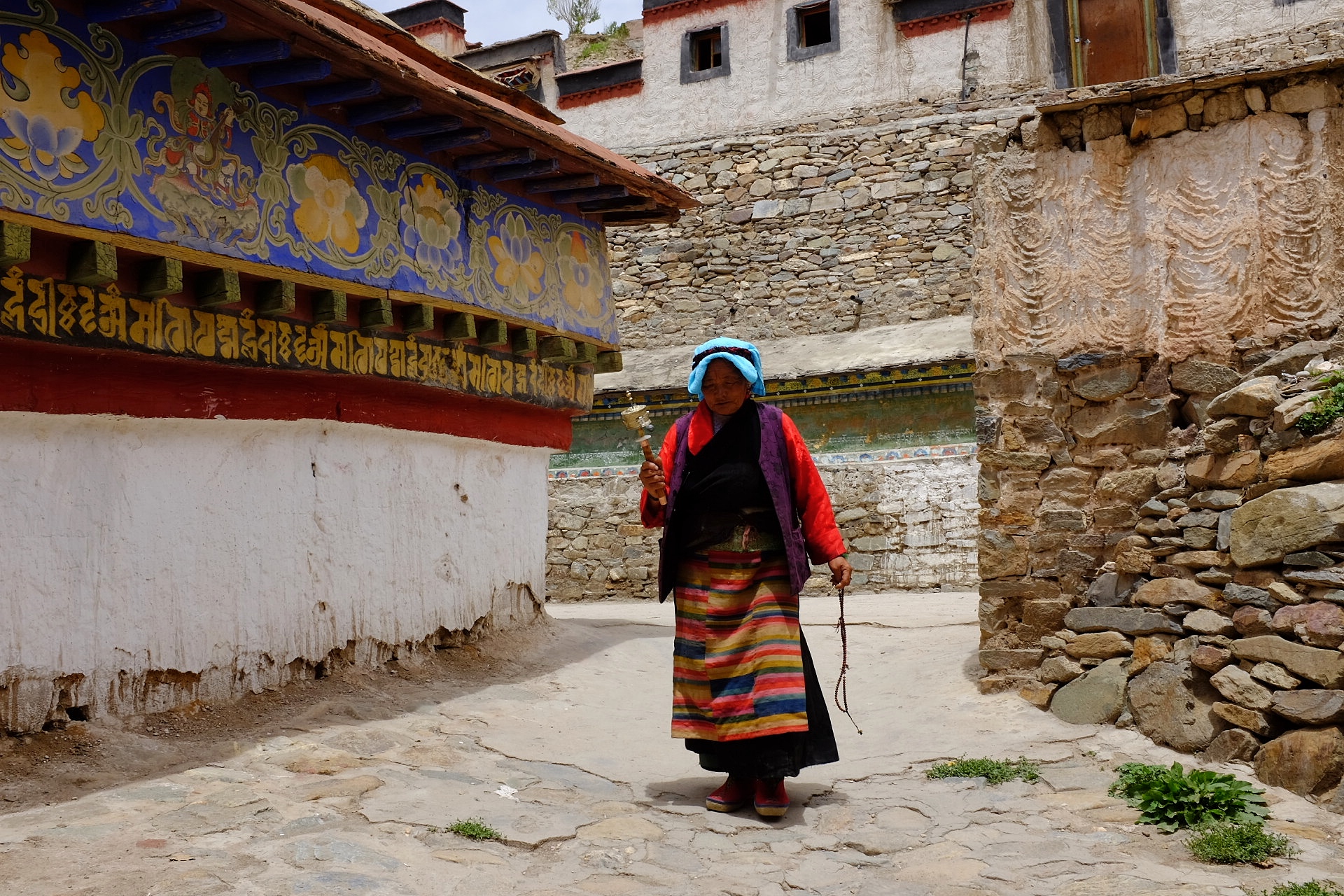
Tourists on the pagoda, can we still leave our mobile phones behind?
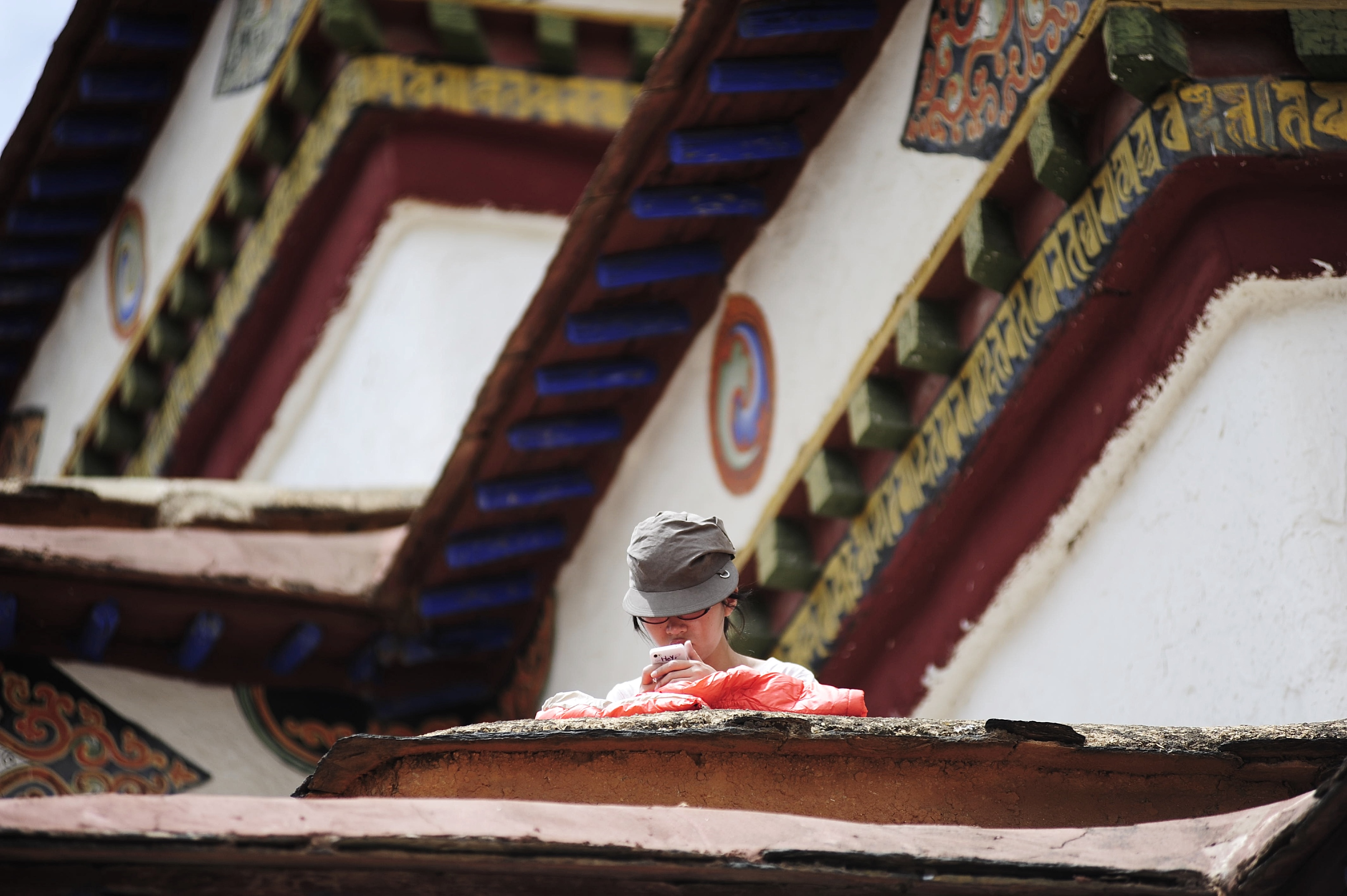
The pigeons in the open space in front of the hall were about to take off, and a monk was also looking at his mobile phone.
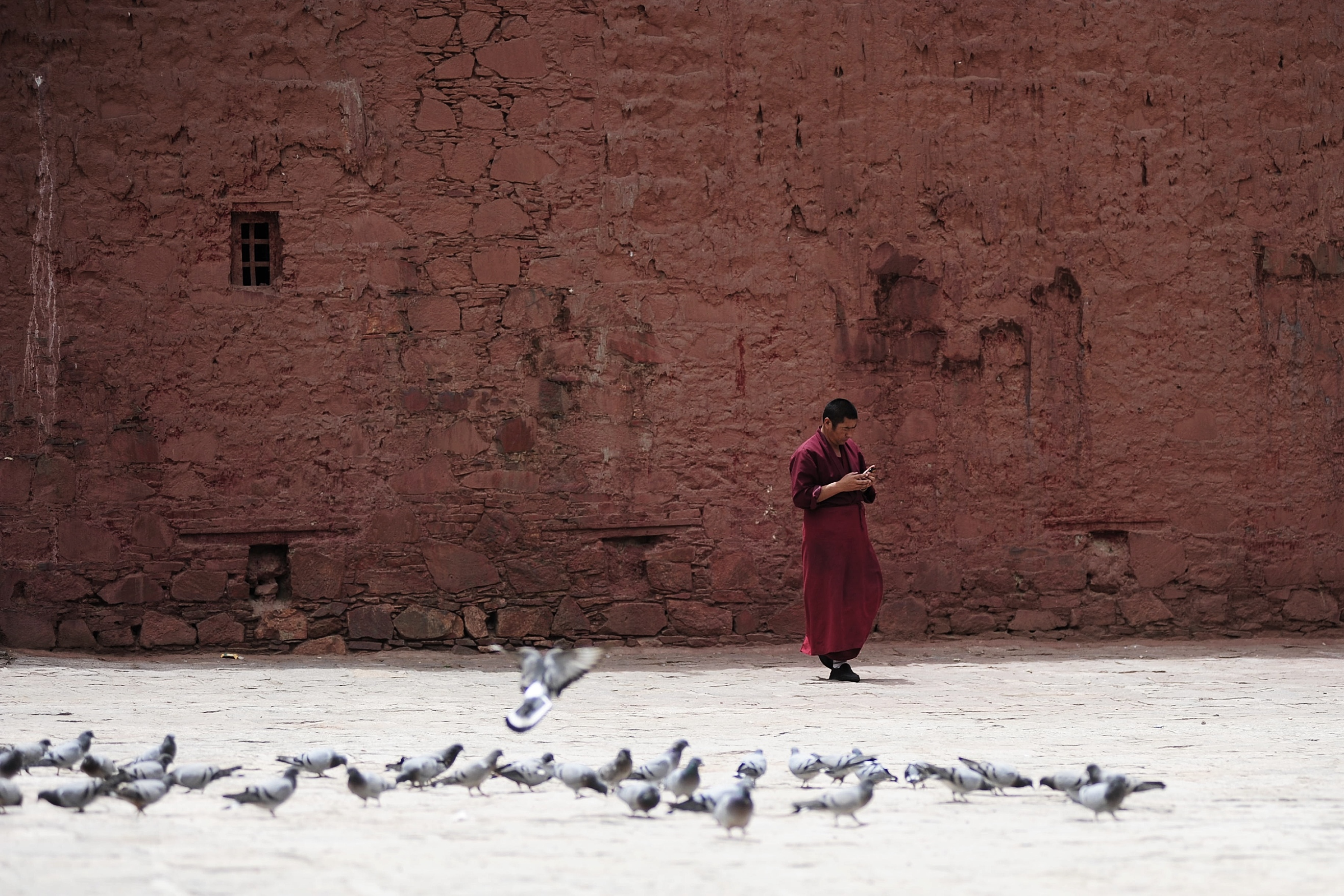
The pigeons soared into the sky, but the monk disappeared.
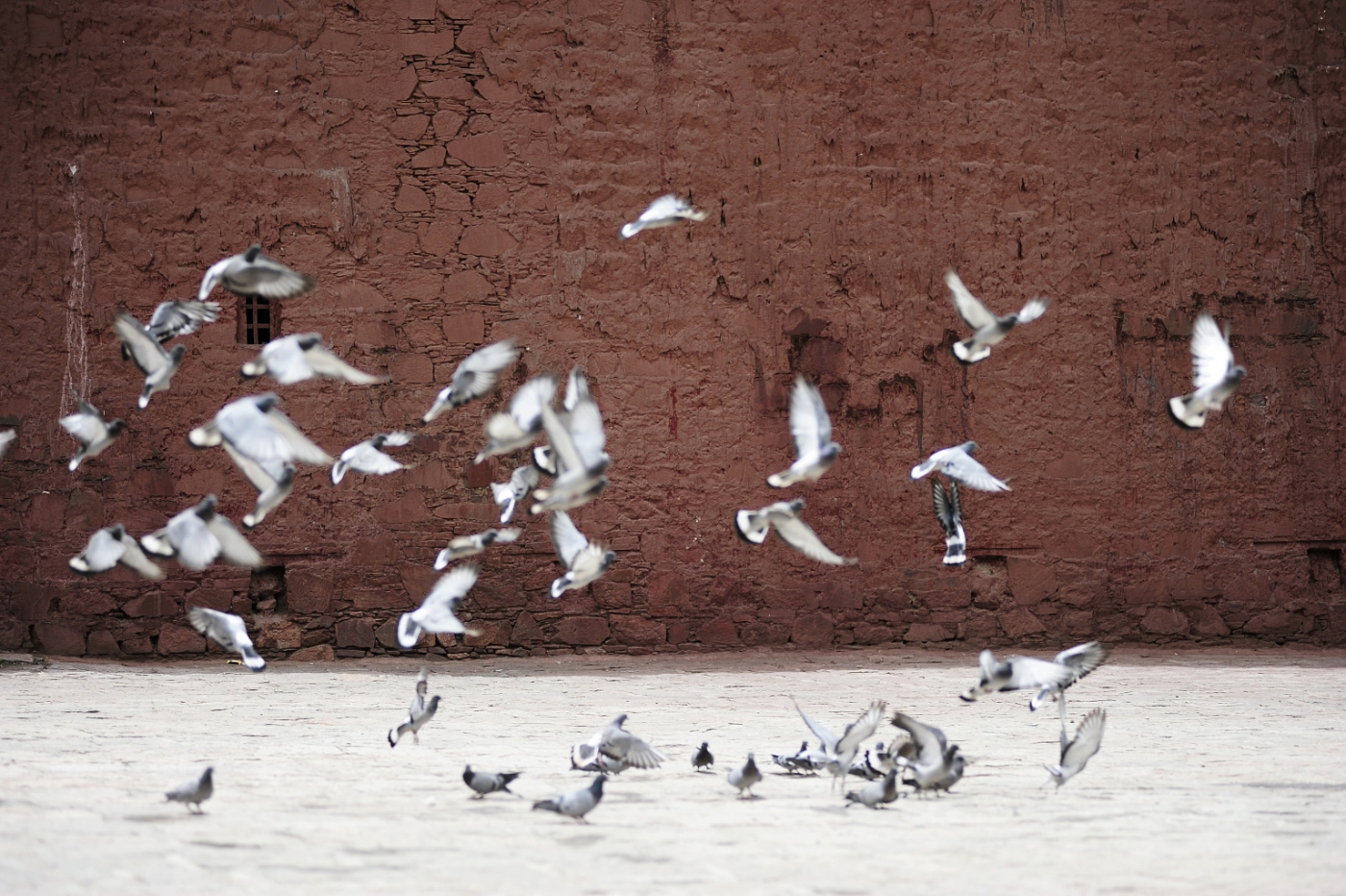
I followed the flock of pigeons and moved the camera to find the monk. Everything was too fast, only 1 second, but I still couldn't get a satisfactory picture.
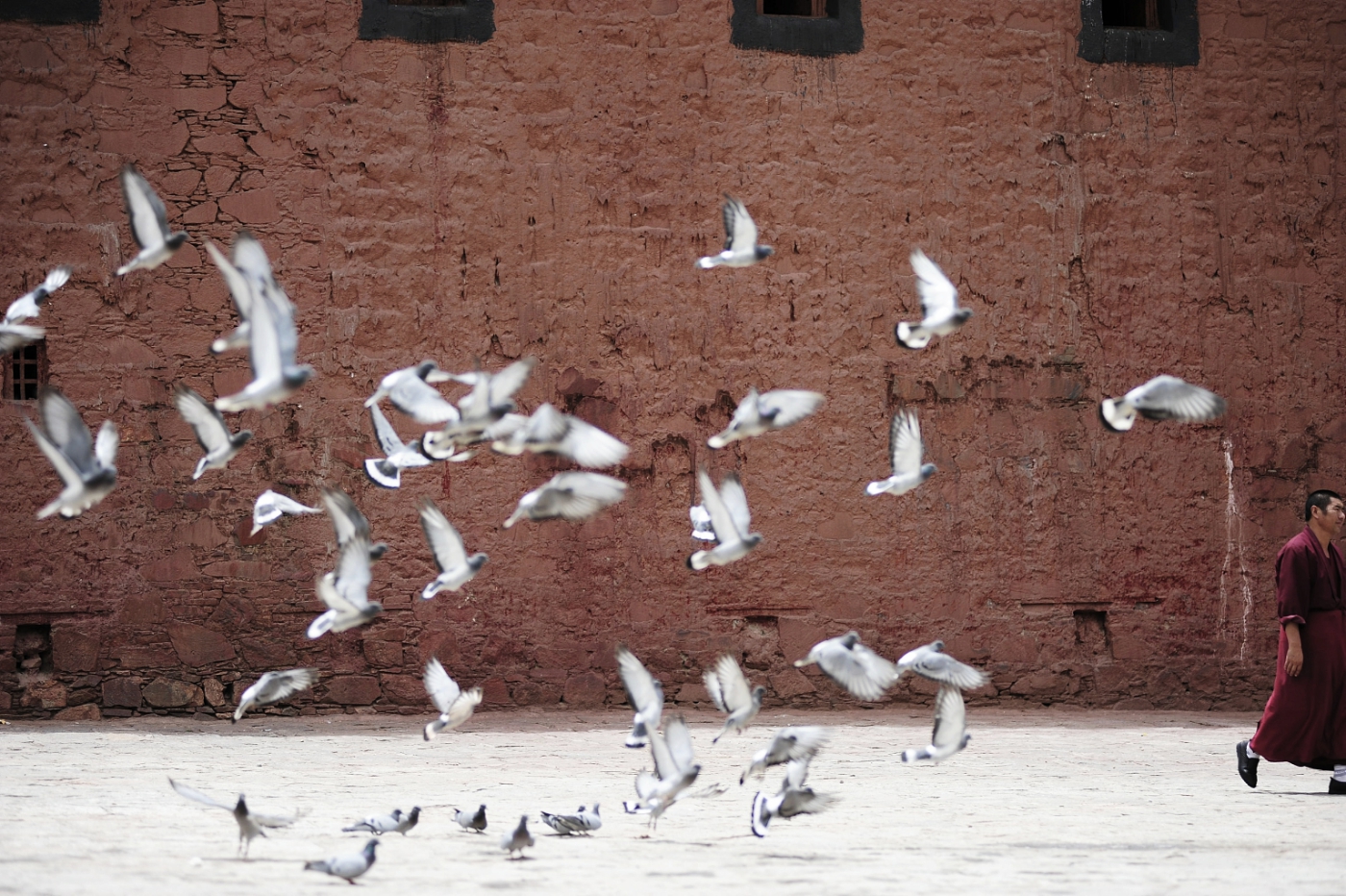
The Gesang flowers outside the main hall, the hazy sky cleared up at noon.
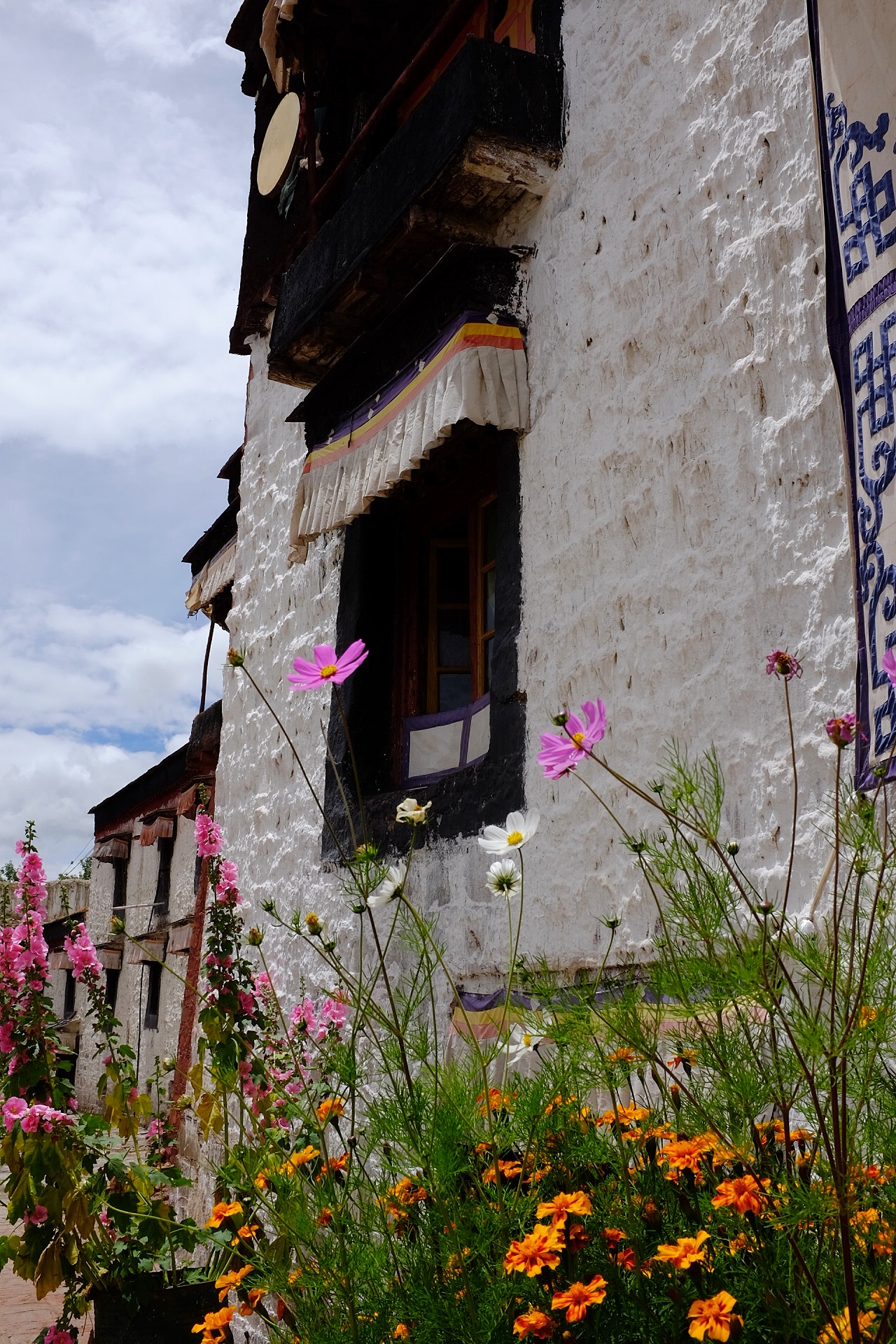
After leaving Baiju Temple, we passed by Zongshan Castle, where Tibetan soldiers and civilians fought against the British army. Now it is a museum. It is so high that I really don’t want to go up there.
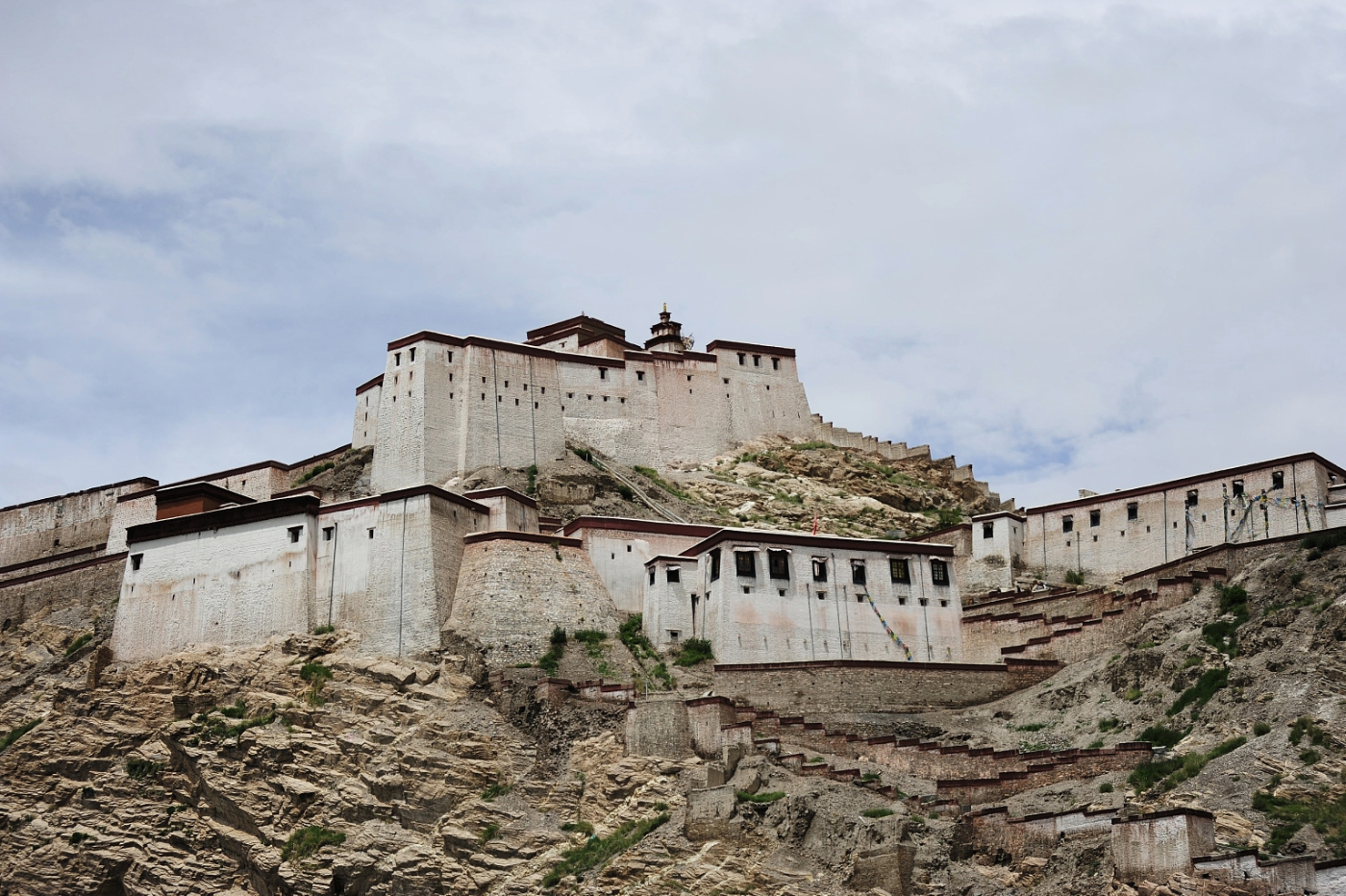
I asked my daughter if she wanted to go to Shigatse?
She asked me what is there in Shigatse?
I said that there is Zhasi Lunbu Temple in Shigatse.
She then asked what was there in Lhunpo Monastery?
I said there is the Dalai Lama’s teacher Panchen Lama.
She thought for a while and said: It's better not to go to the teacher's office.
We had lunch in Gyantse and returned directly to Lhasa. At this time, there is no need to worry at all. Firstly, the weather is getting better and better, and secondly, we have to return to Yamdrok Yumcu.
Passing by the Manla Reservoir on the Nianchu River, the green is intoxicating.
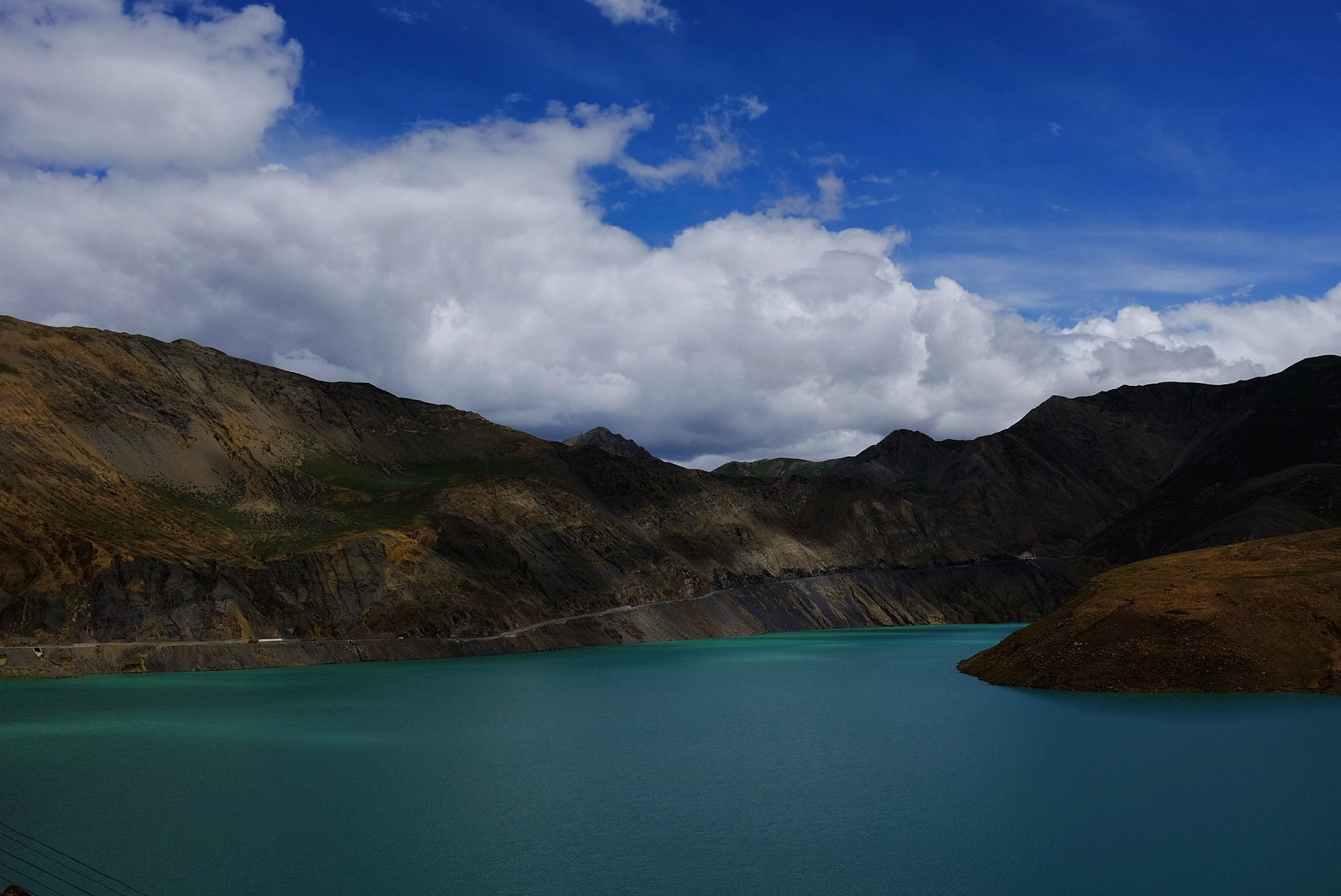
Rapeseed flowers on the roadside
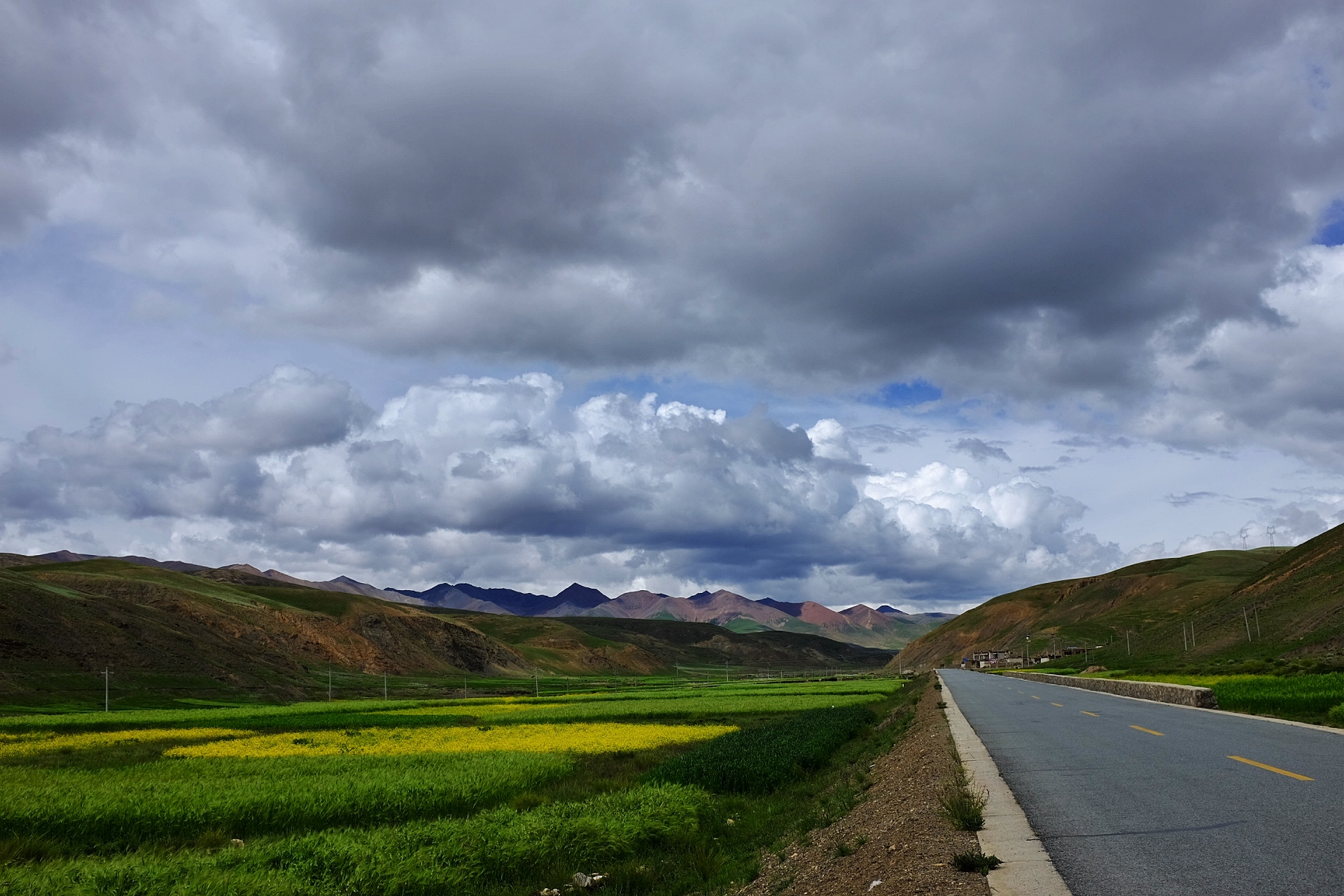
Sheep under the sky
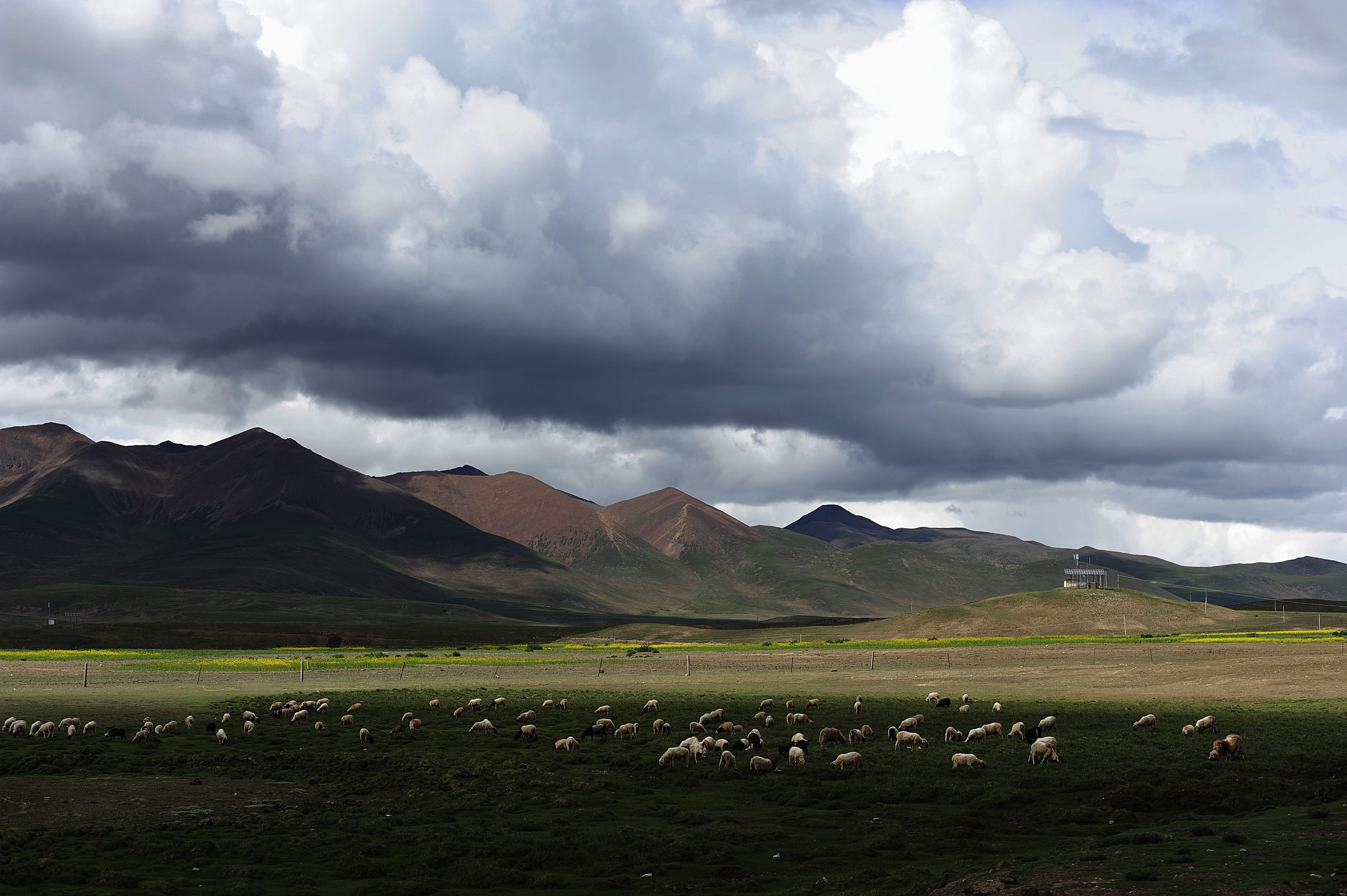
The main peak of Naiqin Kangsang is still hidden in the clouds. The sacred mountain is not so easy to see. The sheep at the foot of the mountain are leisurely sunbathing.
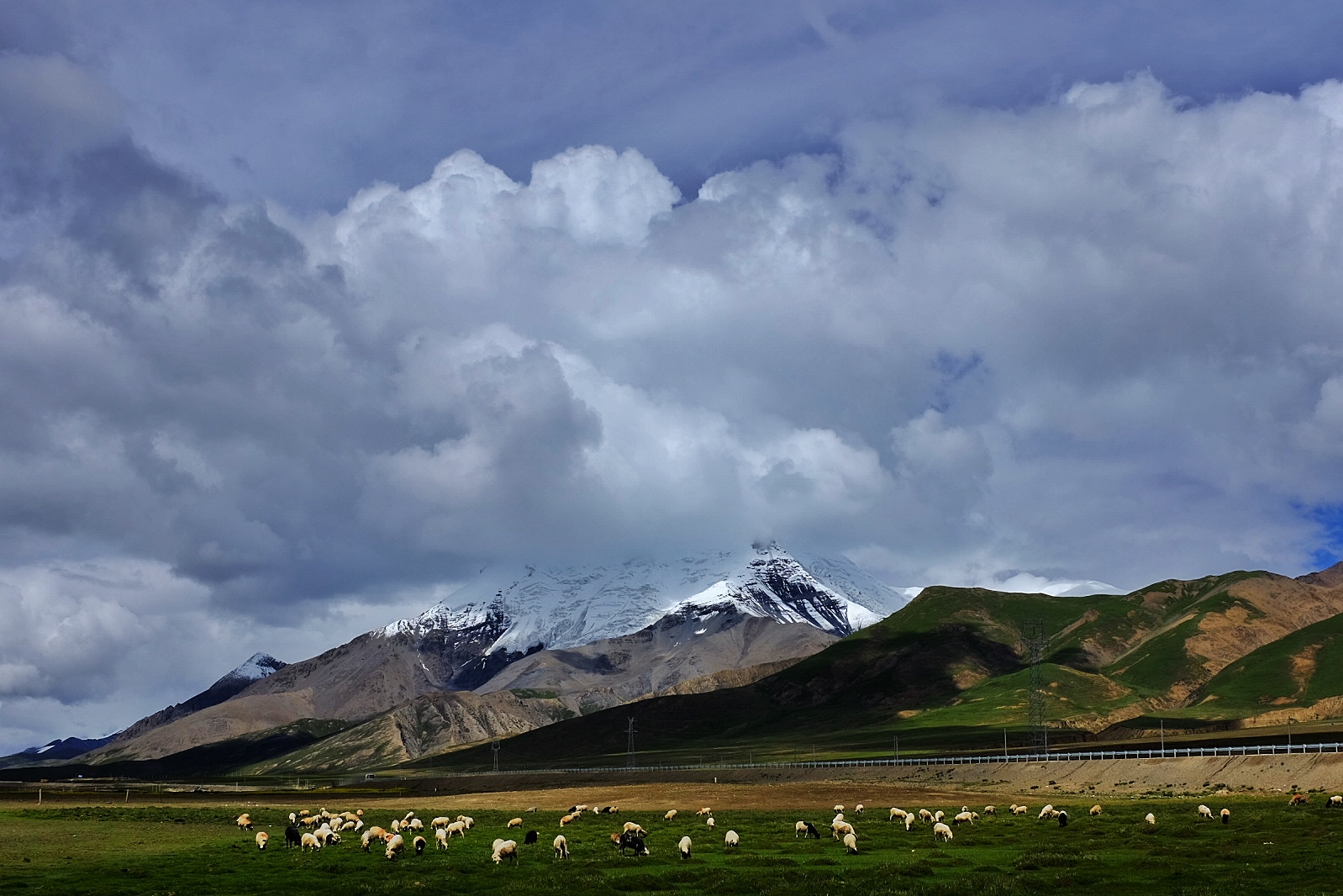
This cloud! This flower!
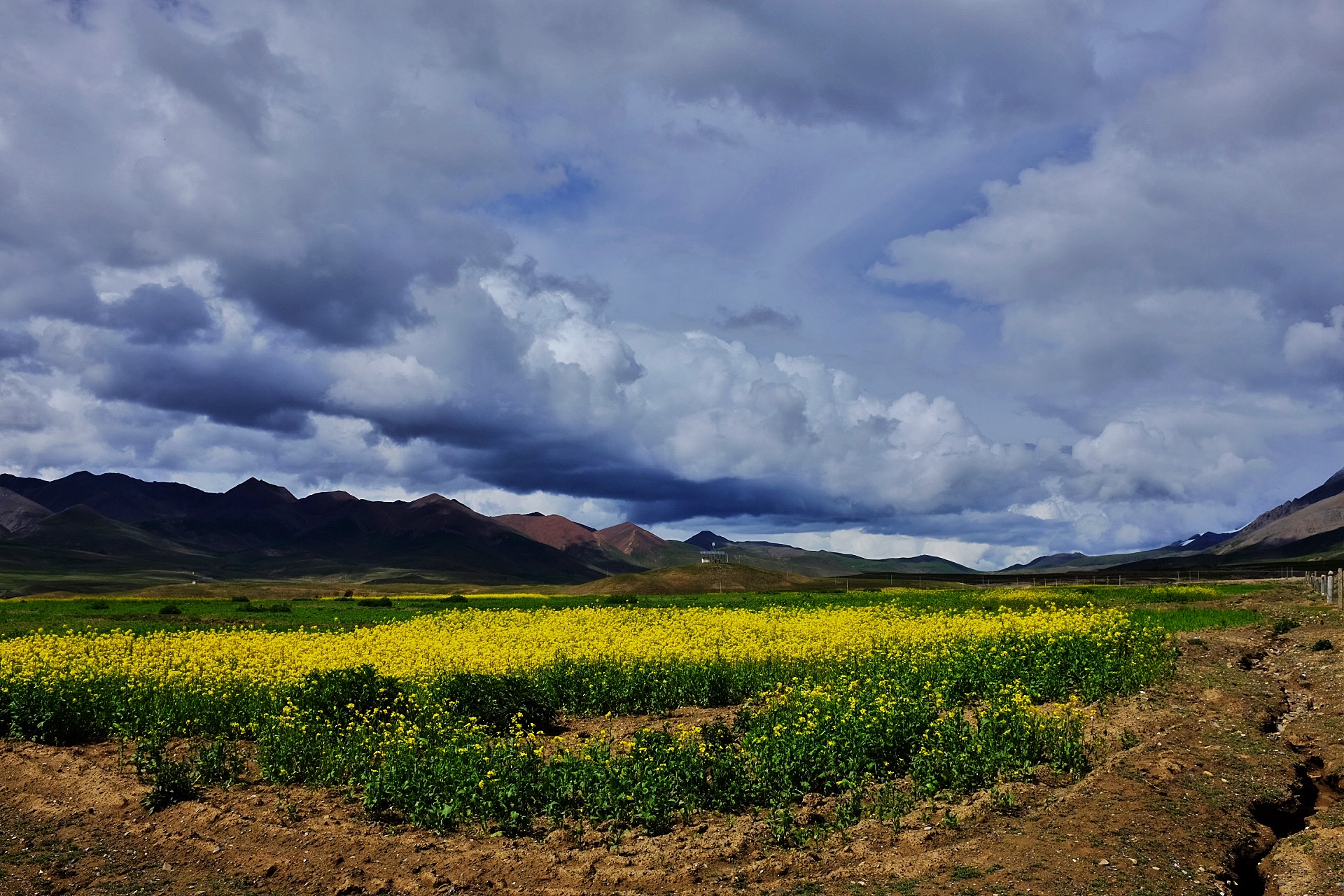
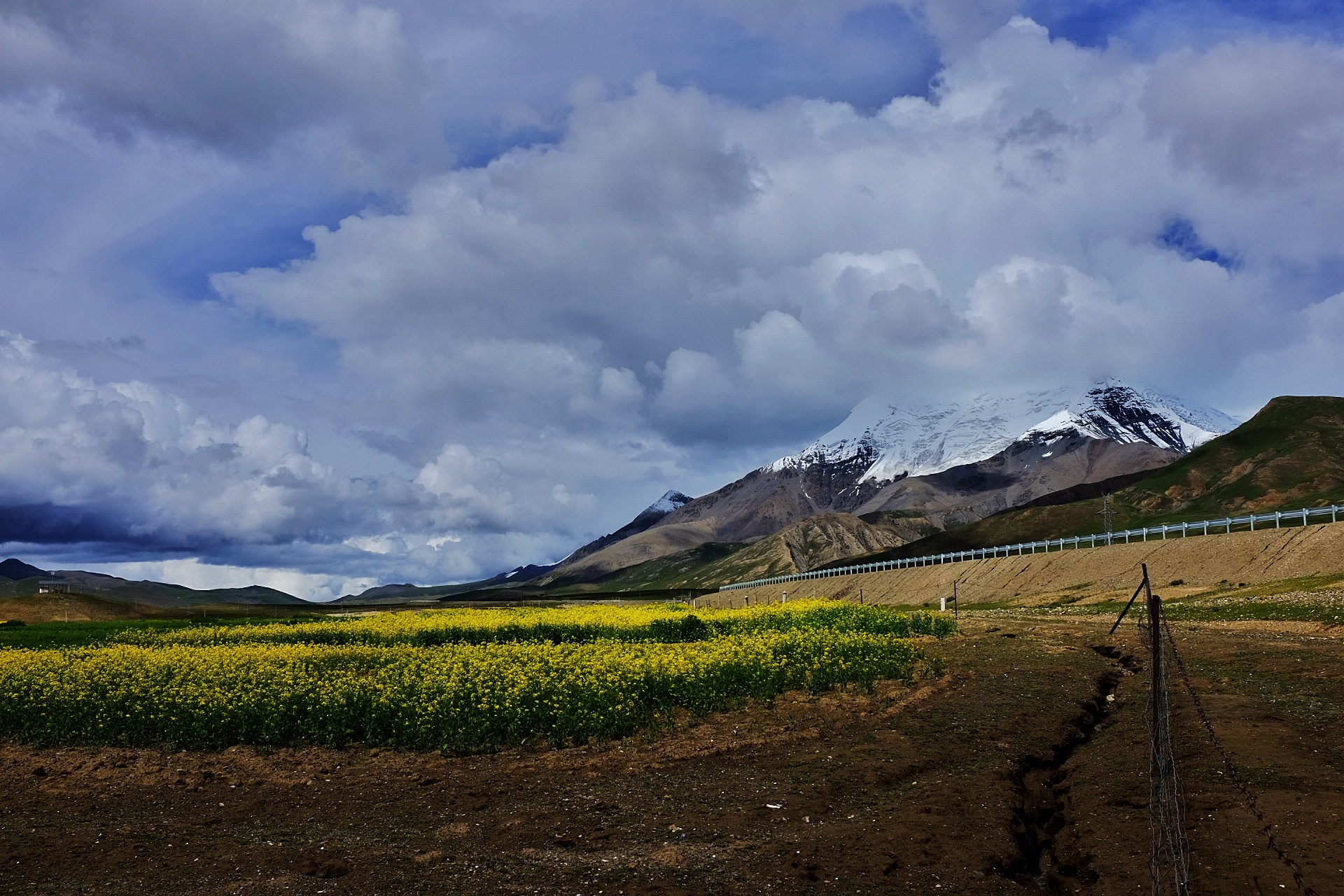
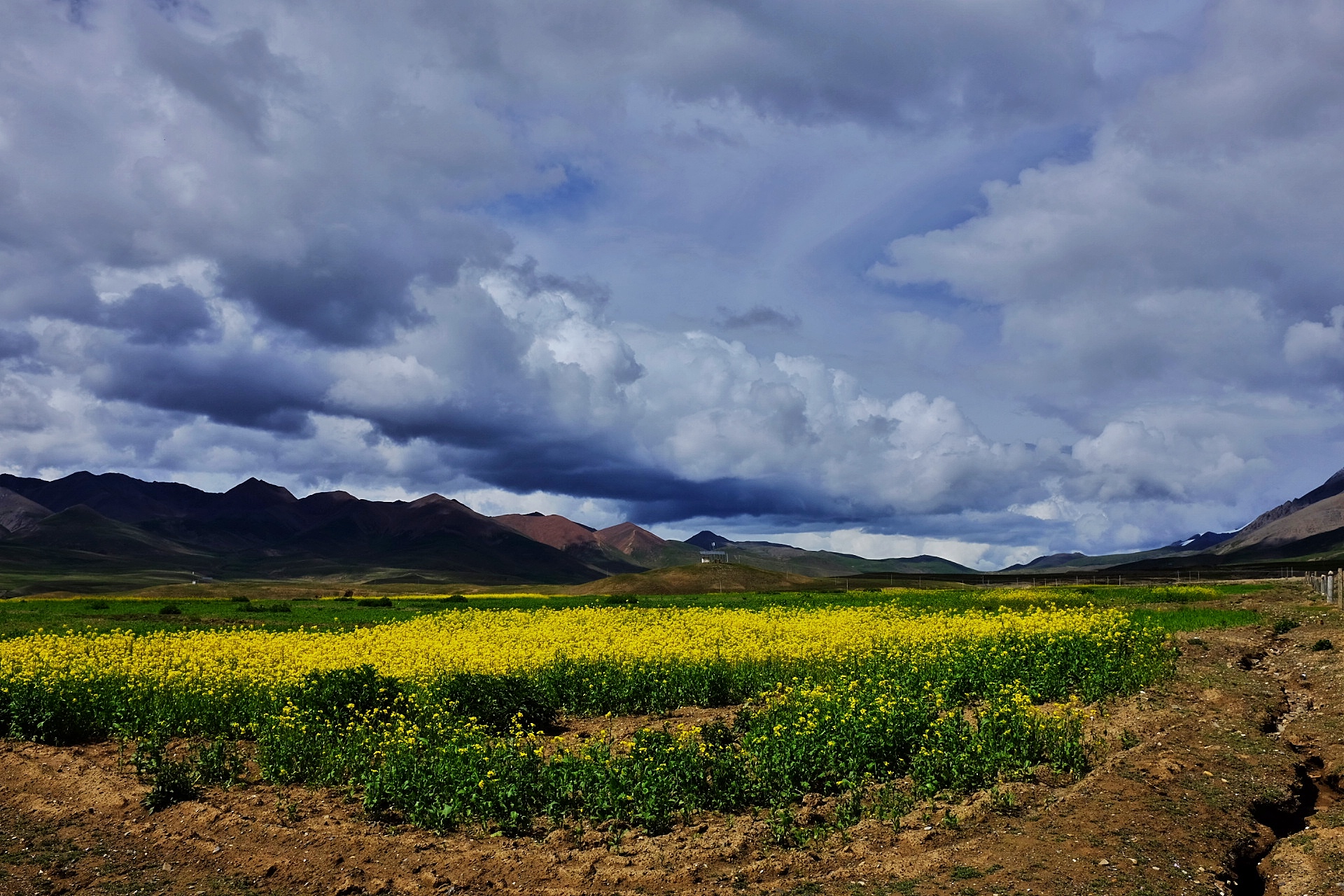
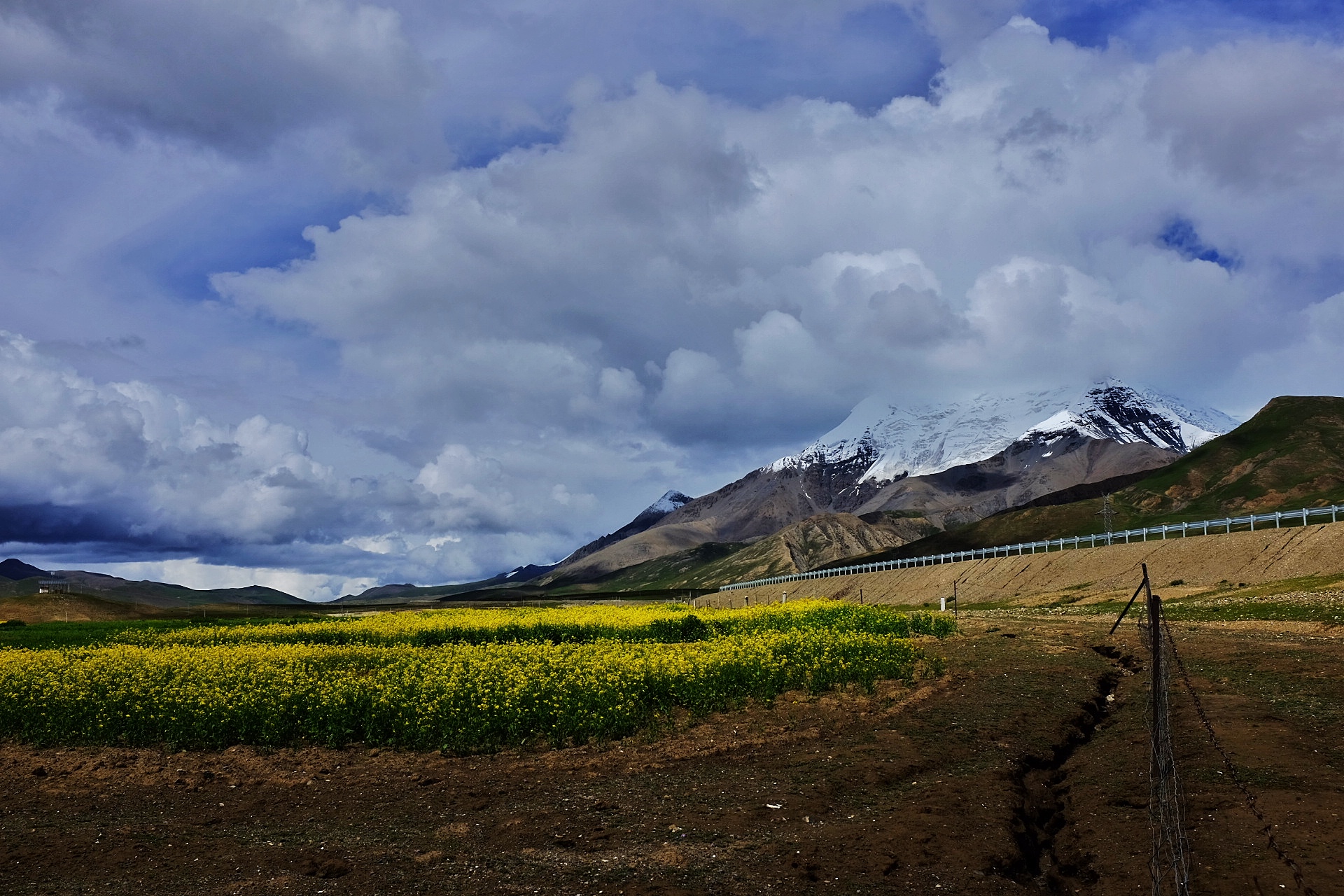
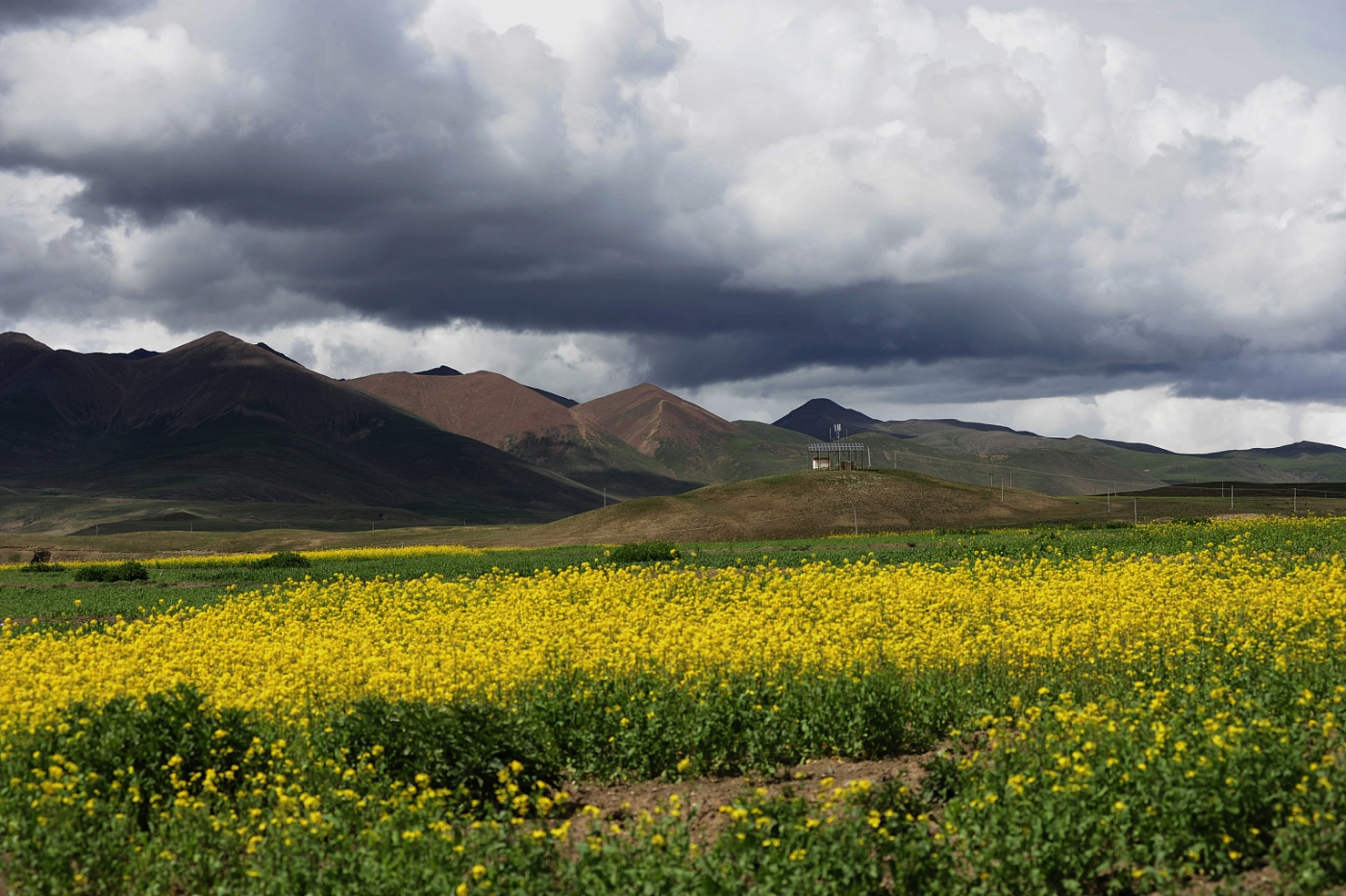
Stop on the roadside closest to Naichen Kangsang and imagine the face behind the clouds.
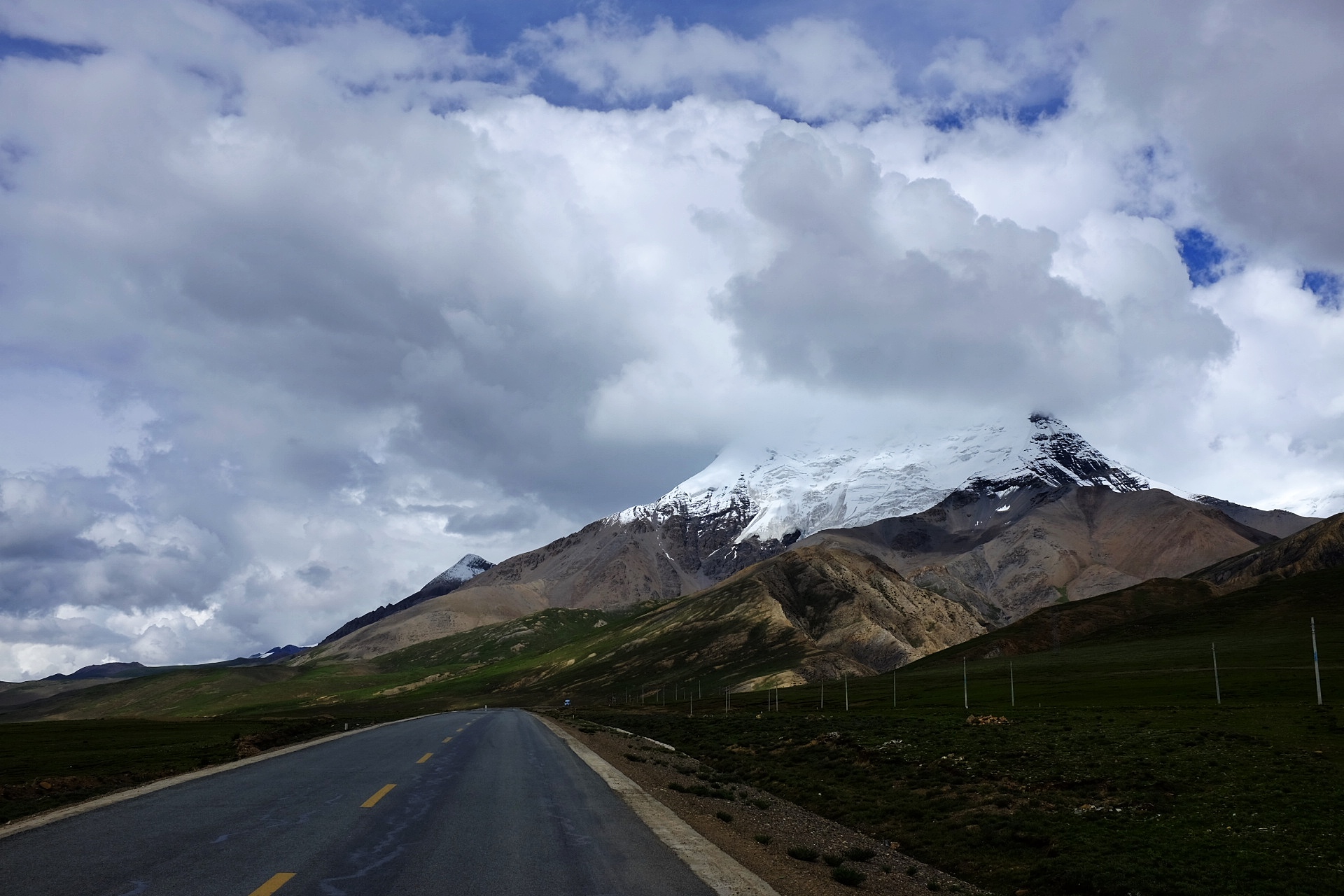
After passing through Nangkazi County, check the speed limit strip again. Even if the license plate is missing, be sure not to lose the speed limit strip. The rapeseed flowers on the edge of Yanghu Lake are even more brilliant in the afternoon sun.
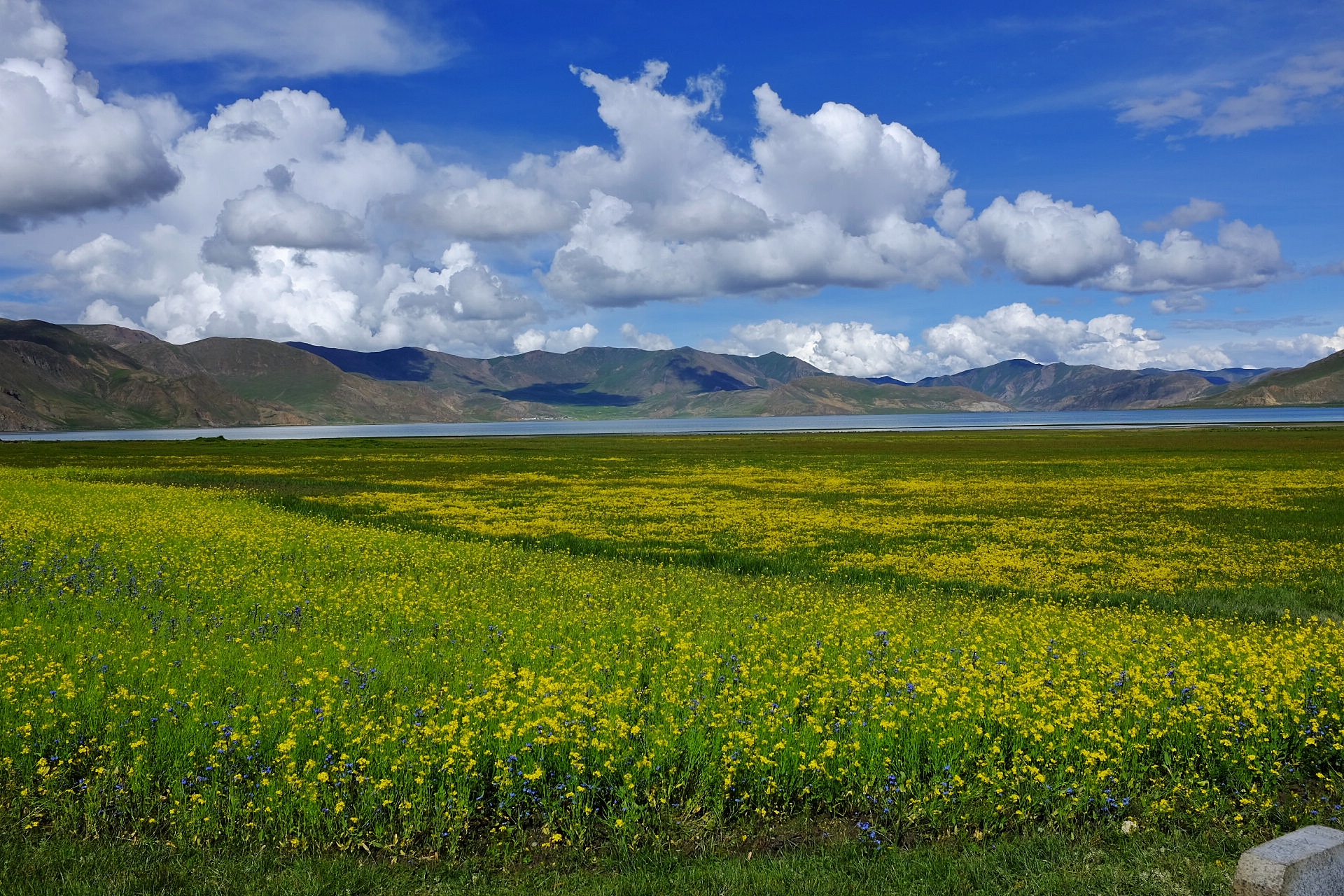
The Yanghu Lake at this moment presents a beautiful scene that cannot be described in words, take a photo!
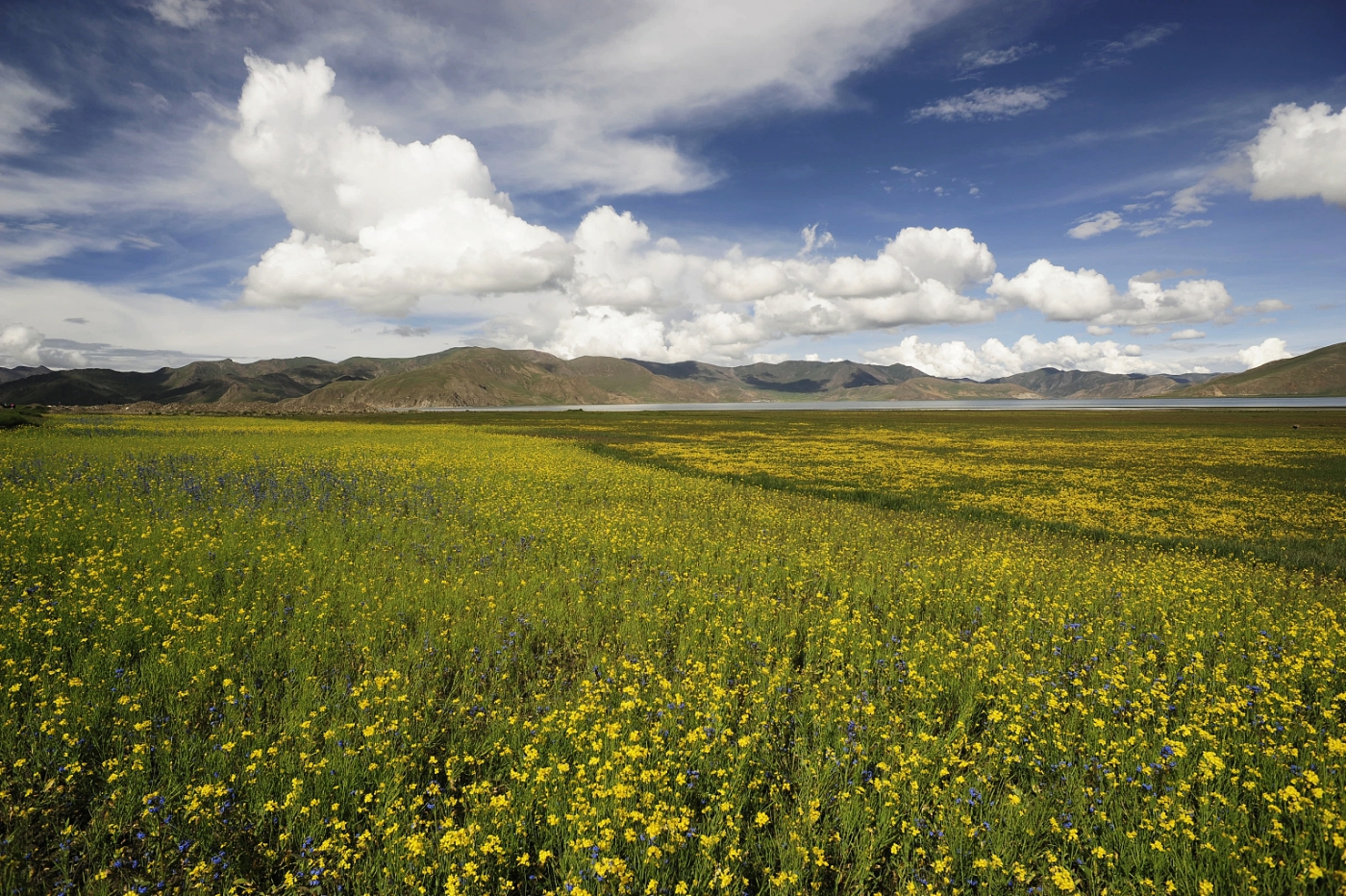
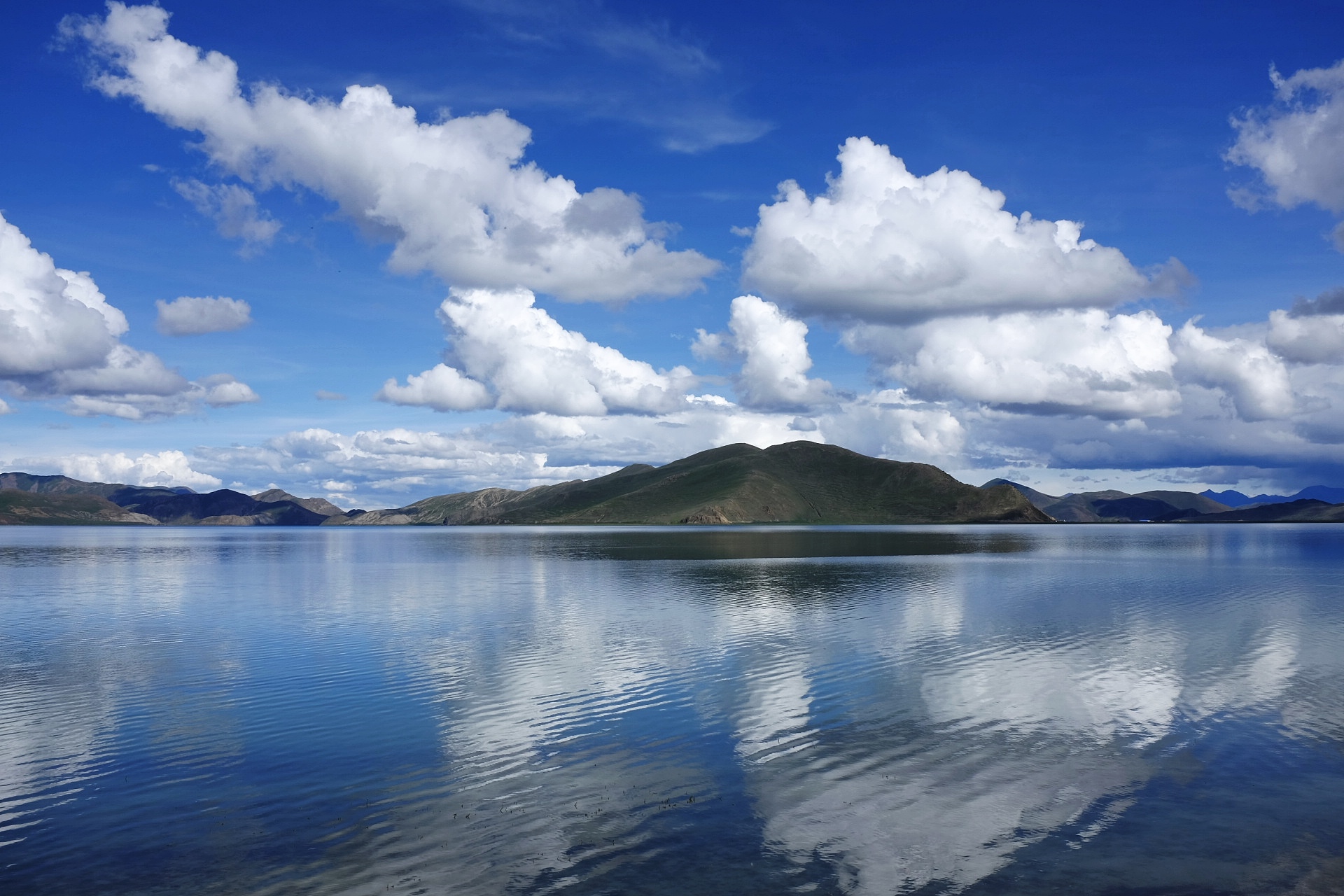
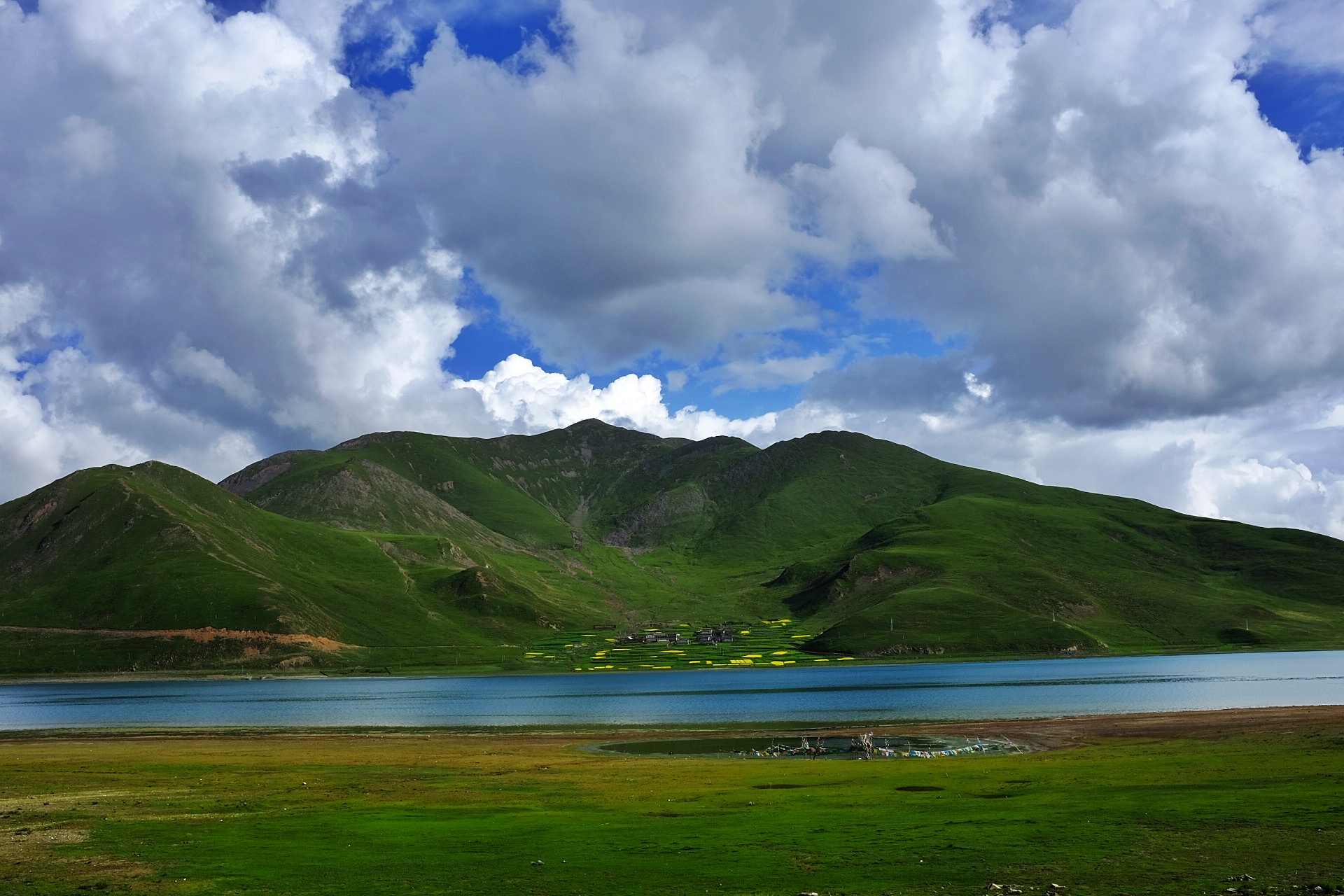
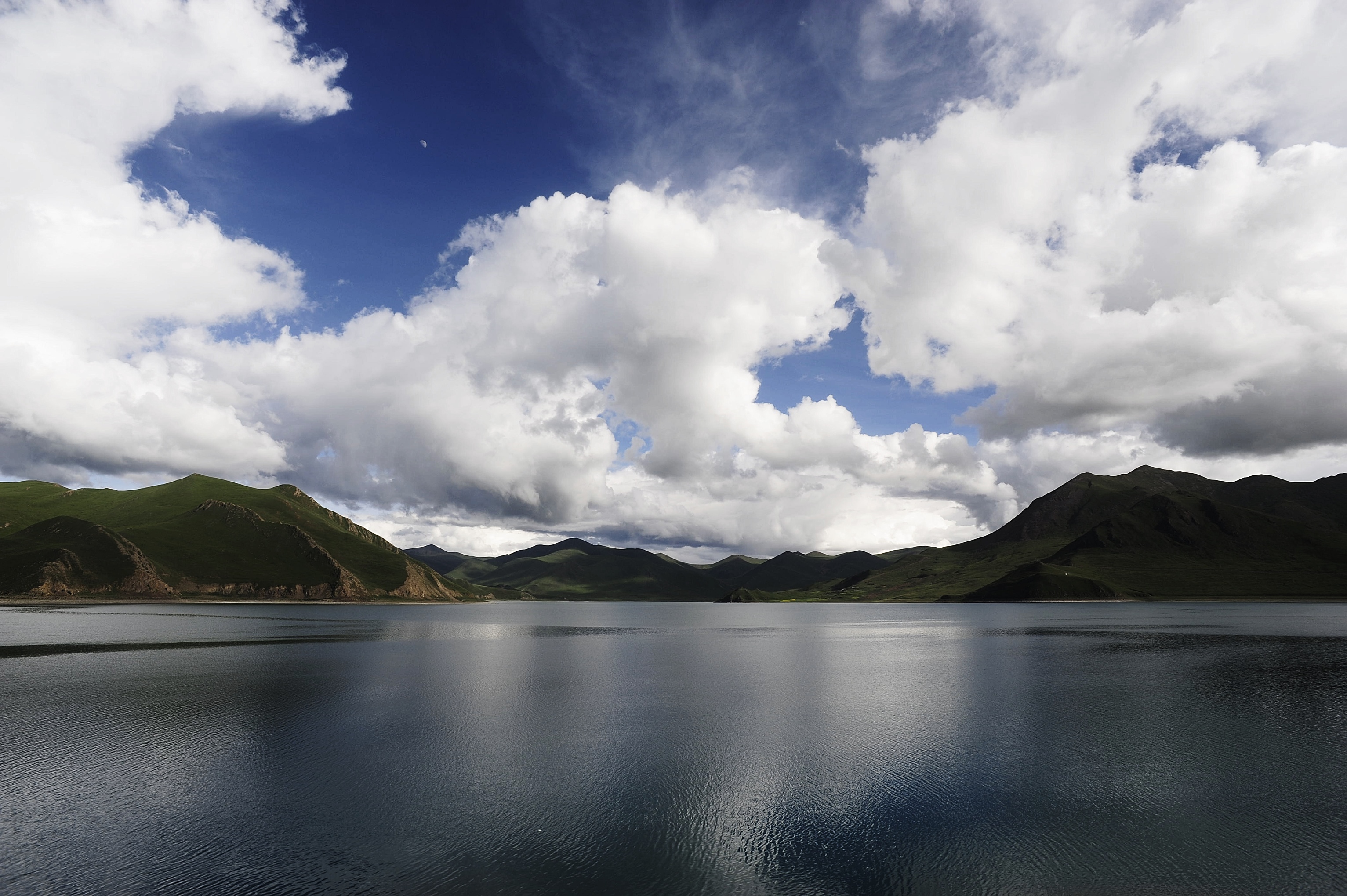
A rainbow spread across the lake. My daughter said she finally saw the legendary rainbow with her own eyes!
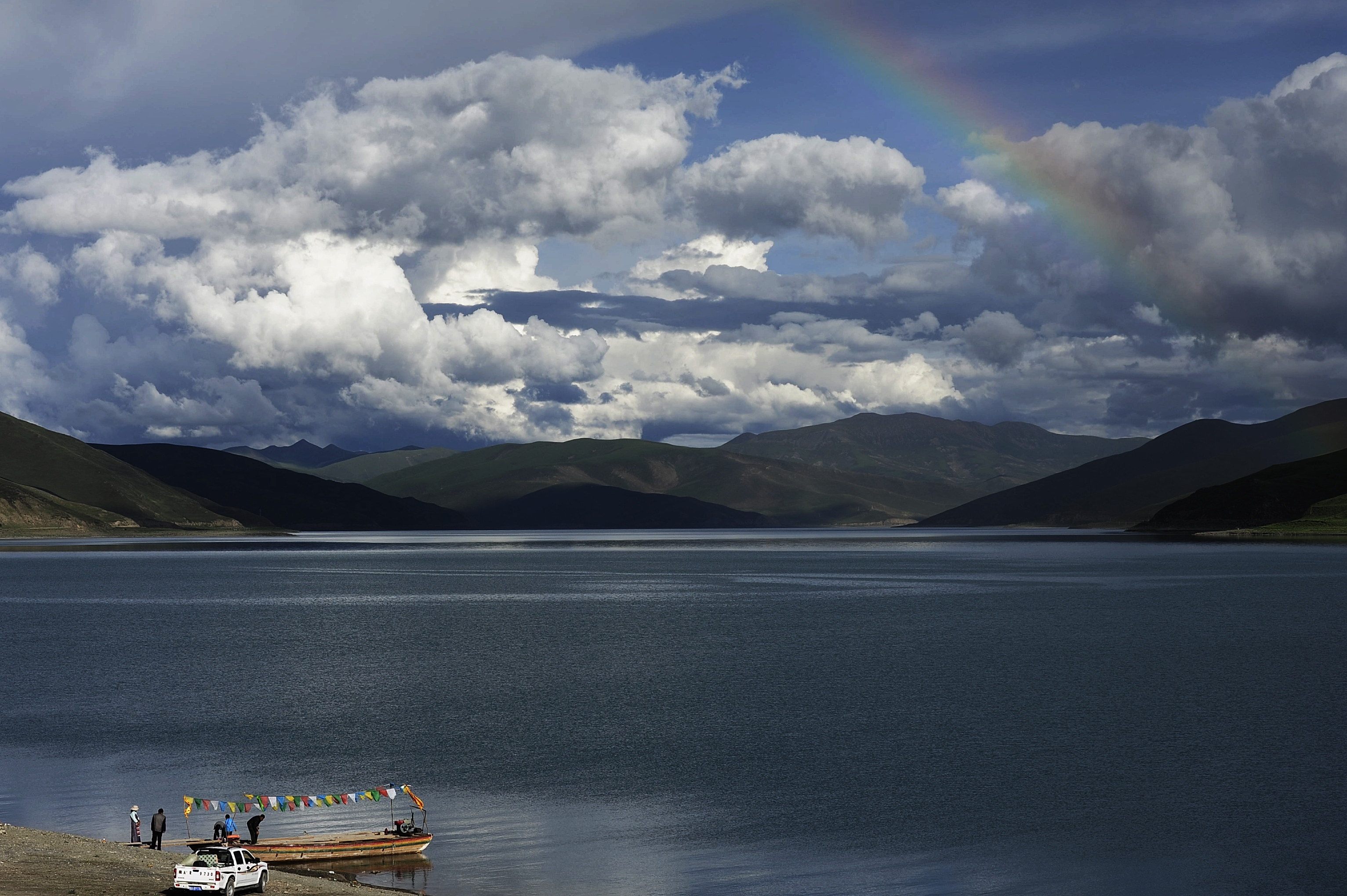
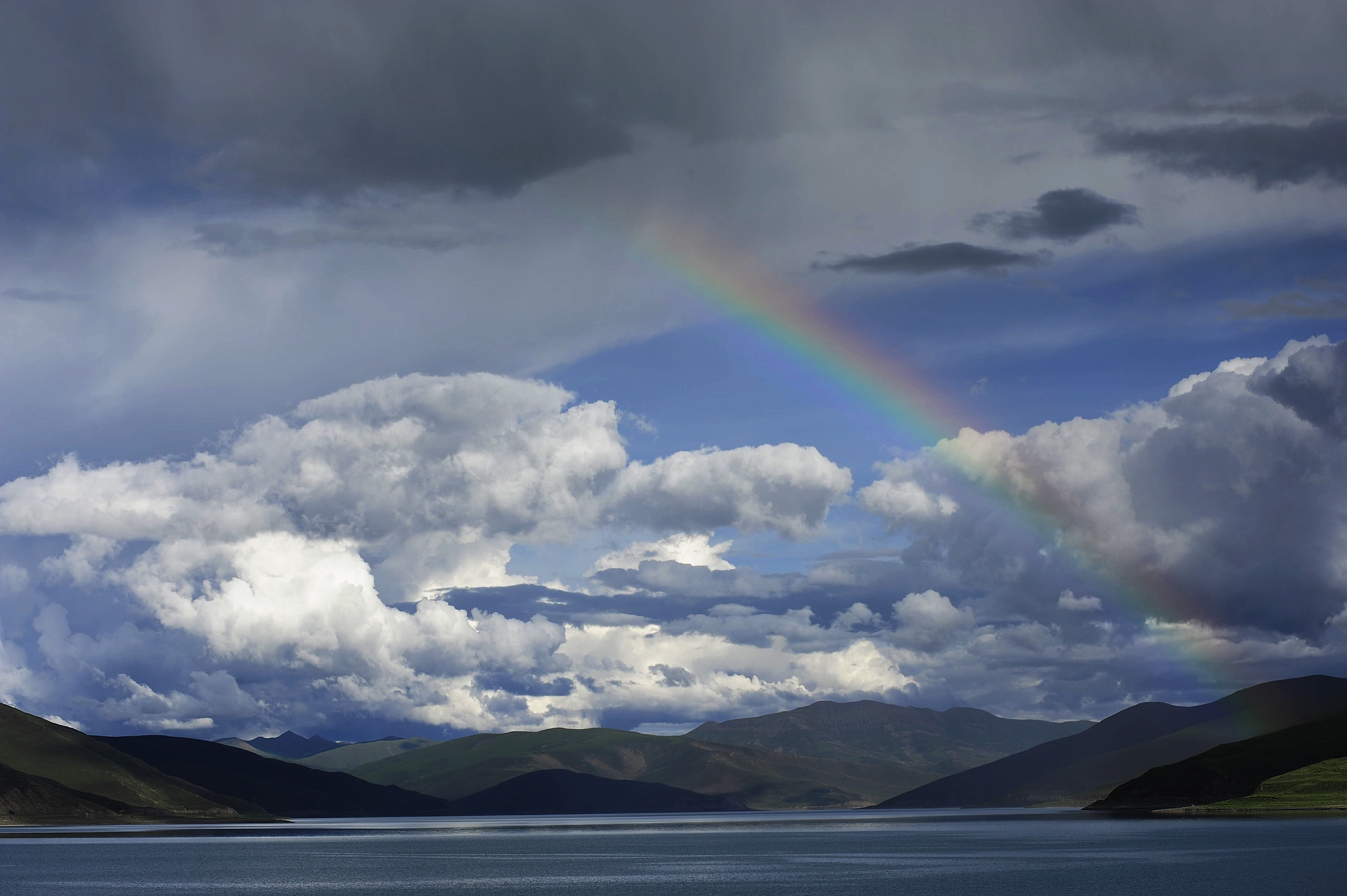
Today's Yamdrok Yumcuo is bluer and more beautiful than yesterday. What else can I do except keep taking pictures?
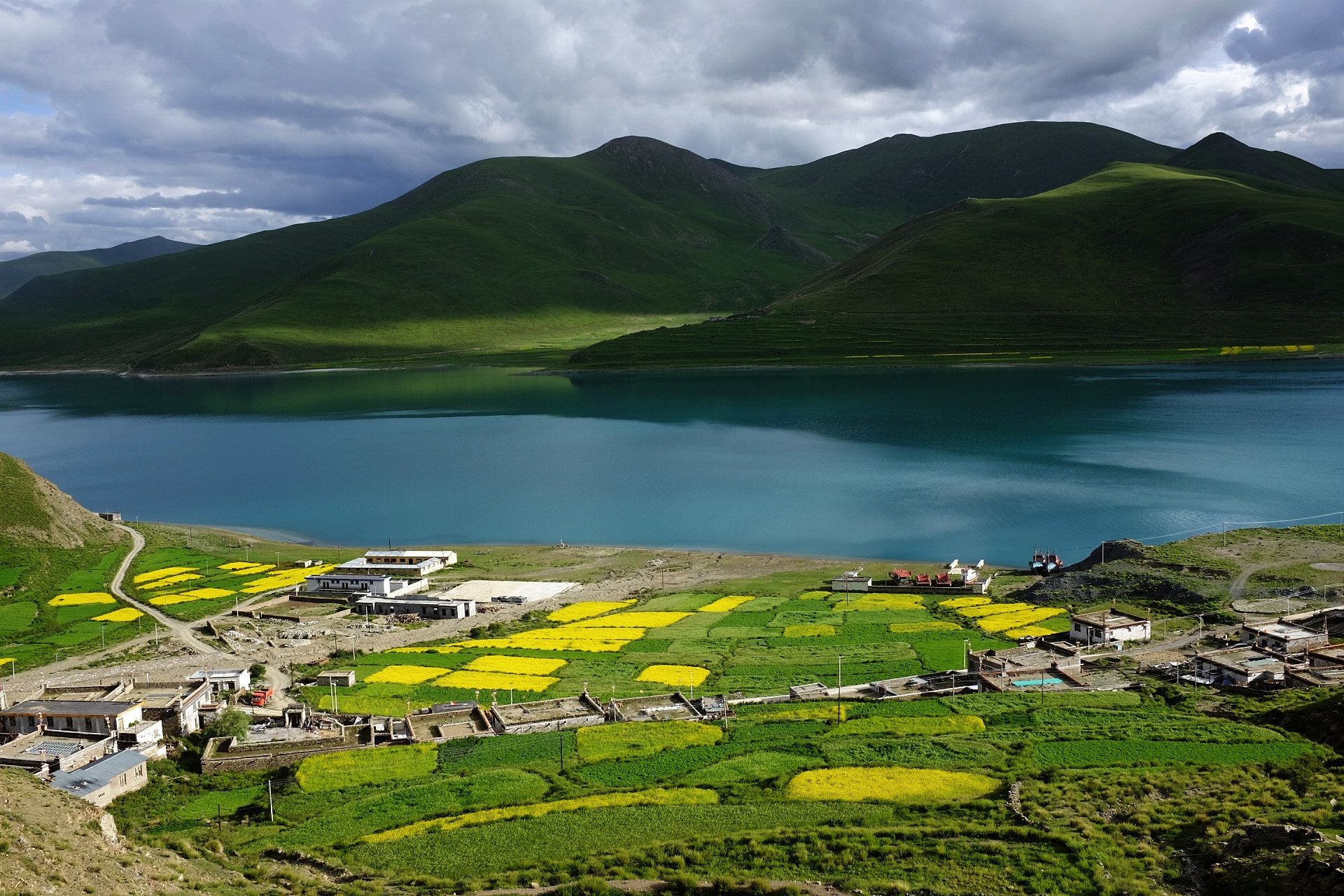
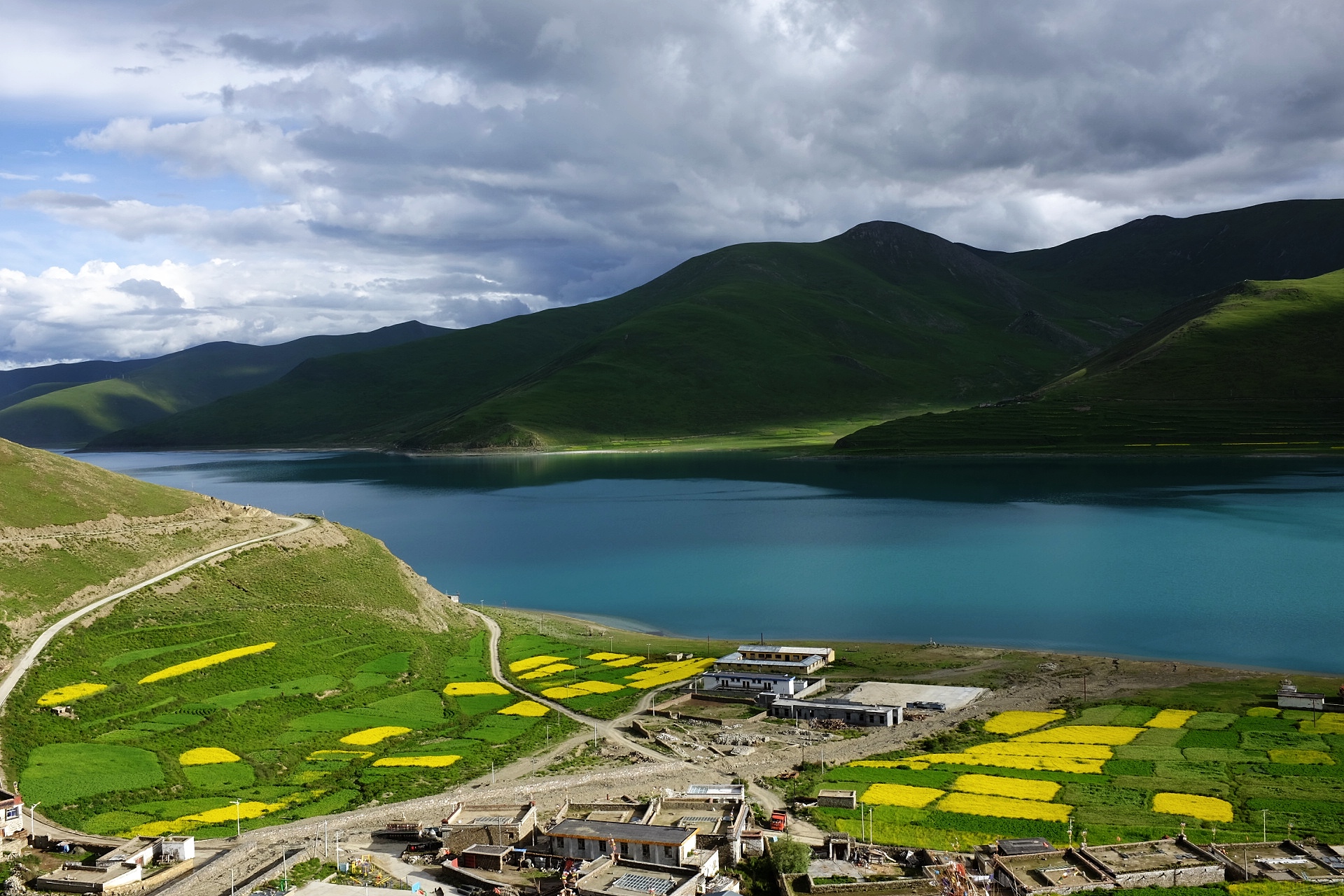
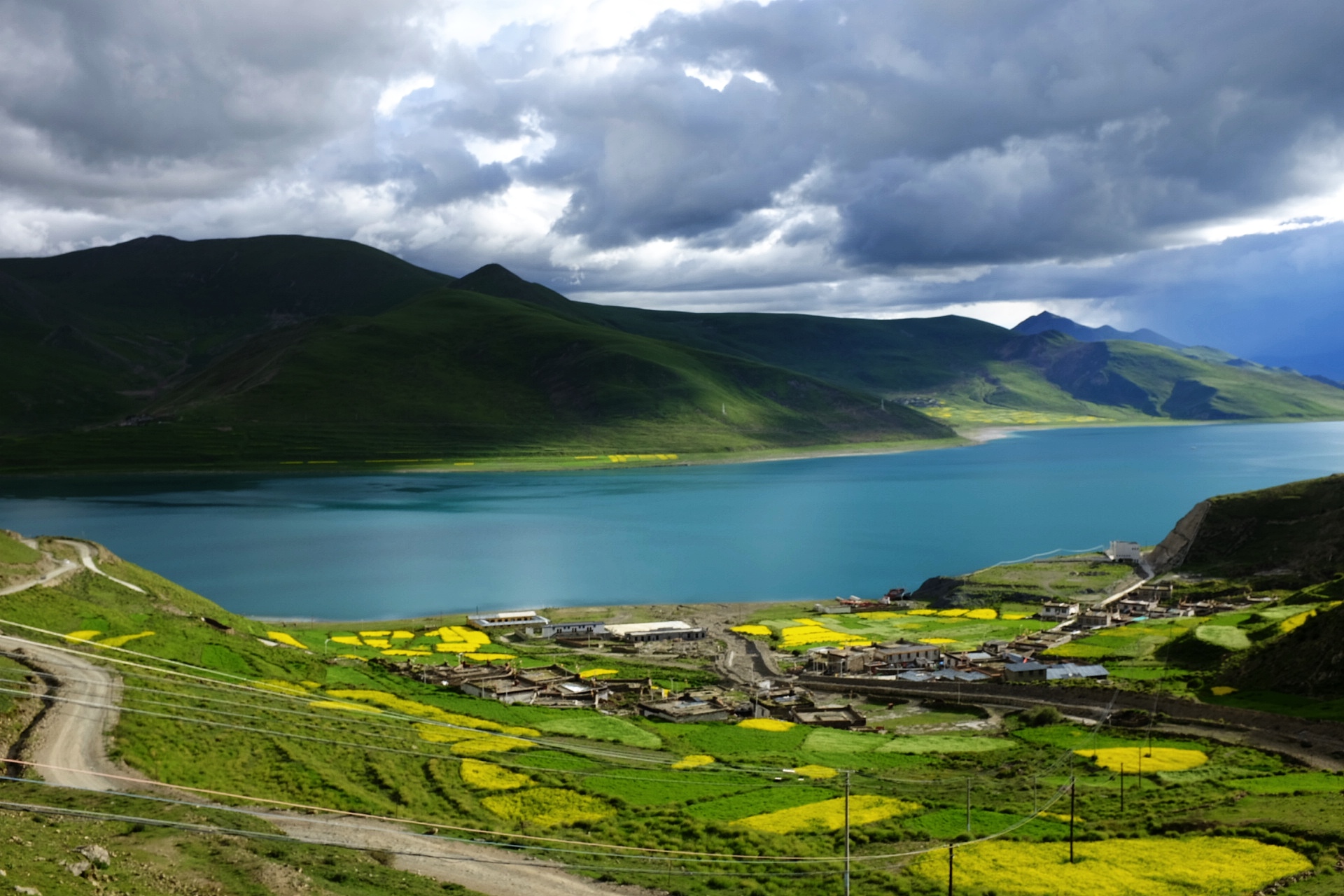
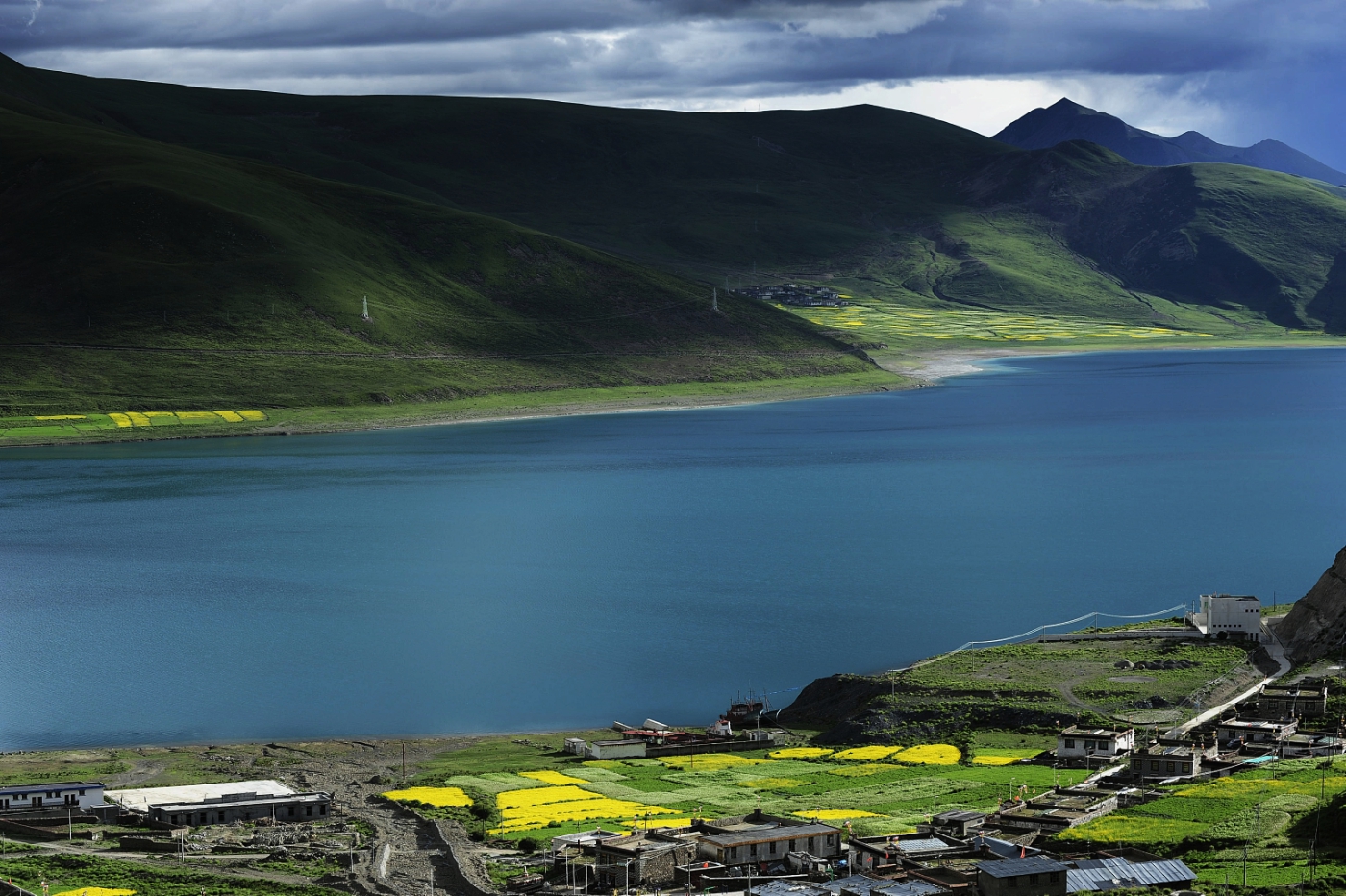
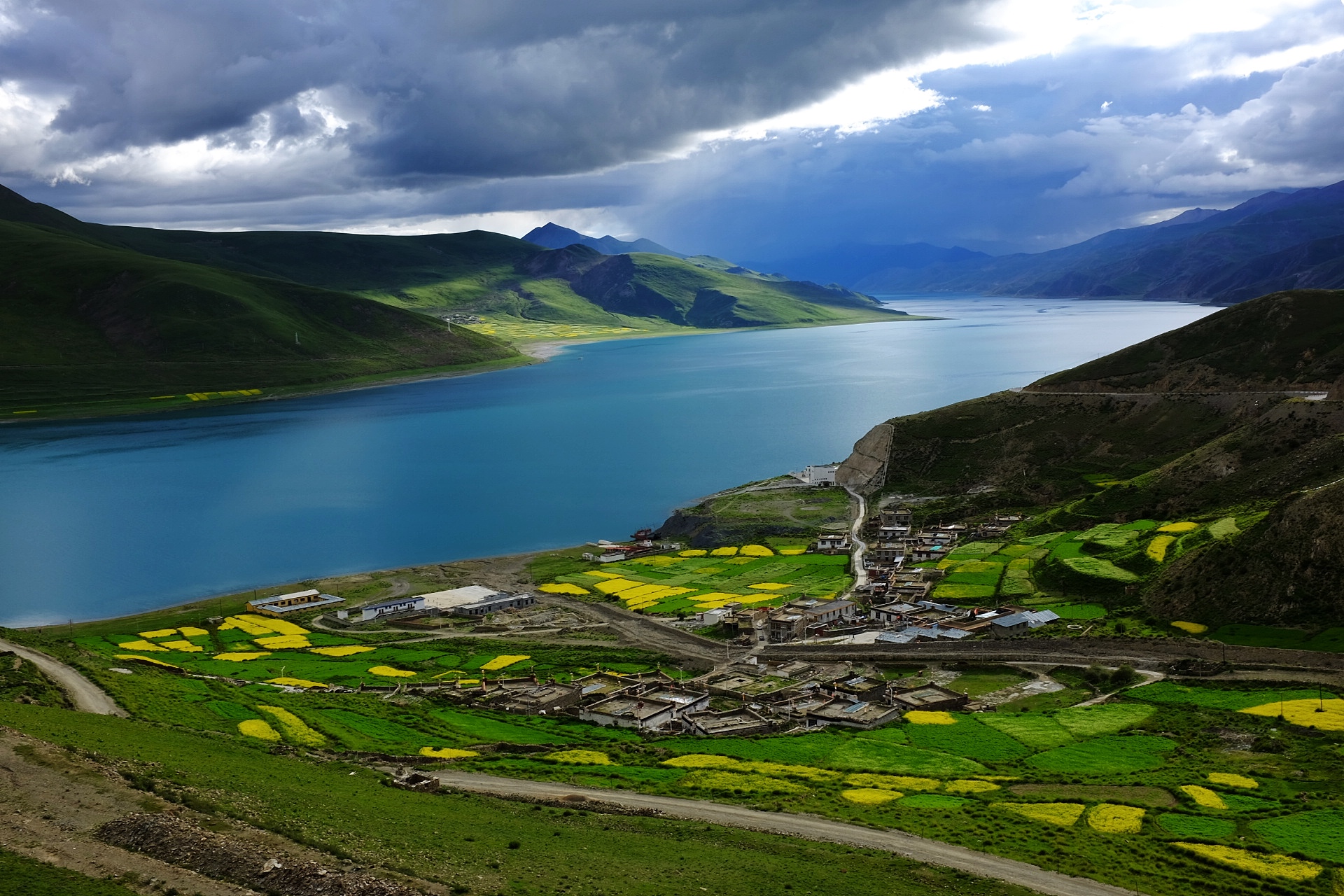
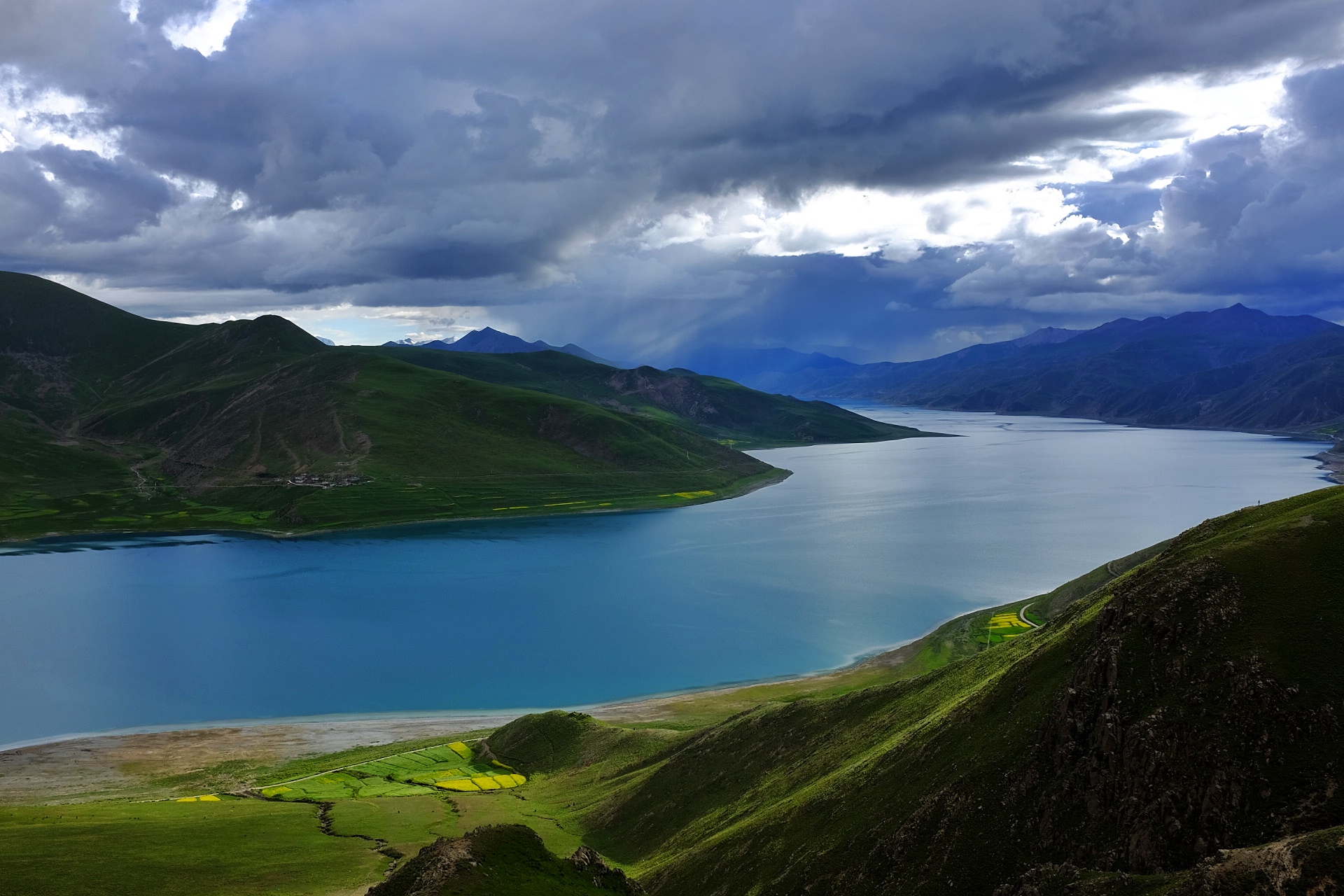
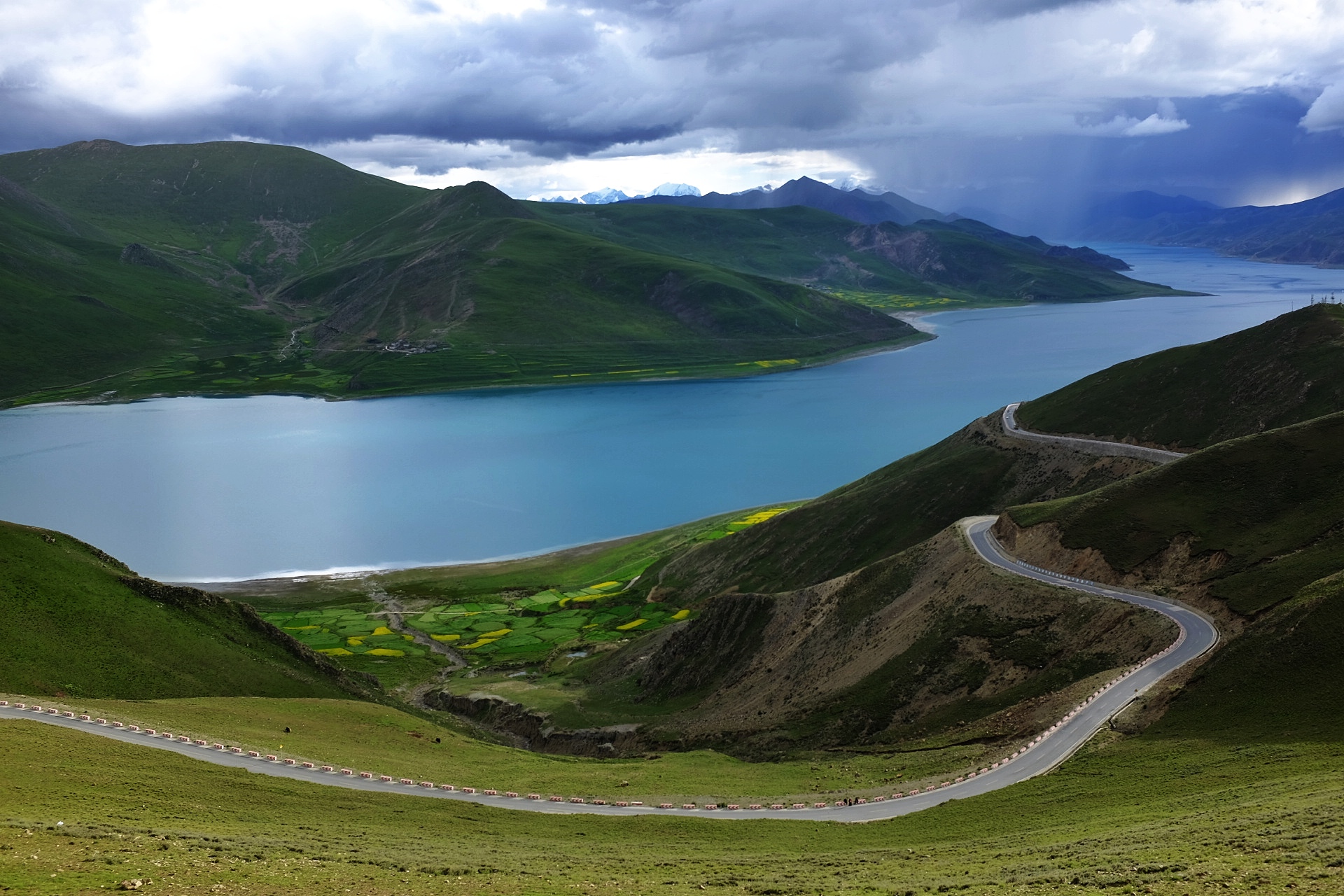
Arriving at Gangbala Pass again, Naichen Kangsang finally showed his dignity at the moment of parting. Are you here to see us off? It doesn't matter, I will come to see you again, because Ali is still calling me. Goodbye, Naichin Kangsang! Farewell, Yamdrok Yumco!
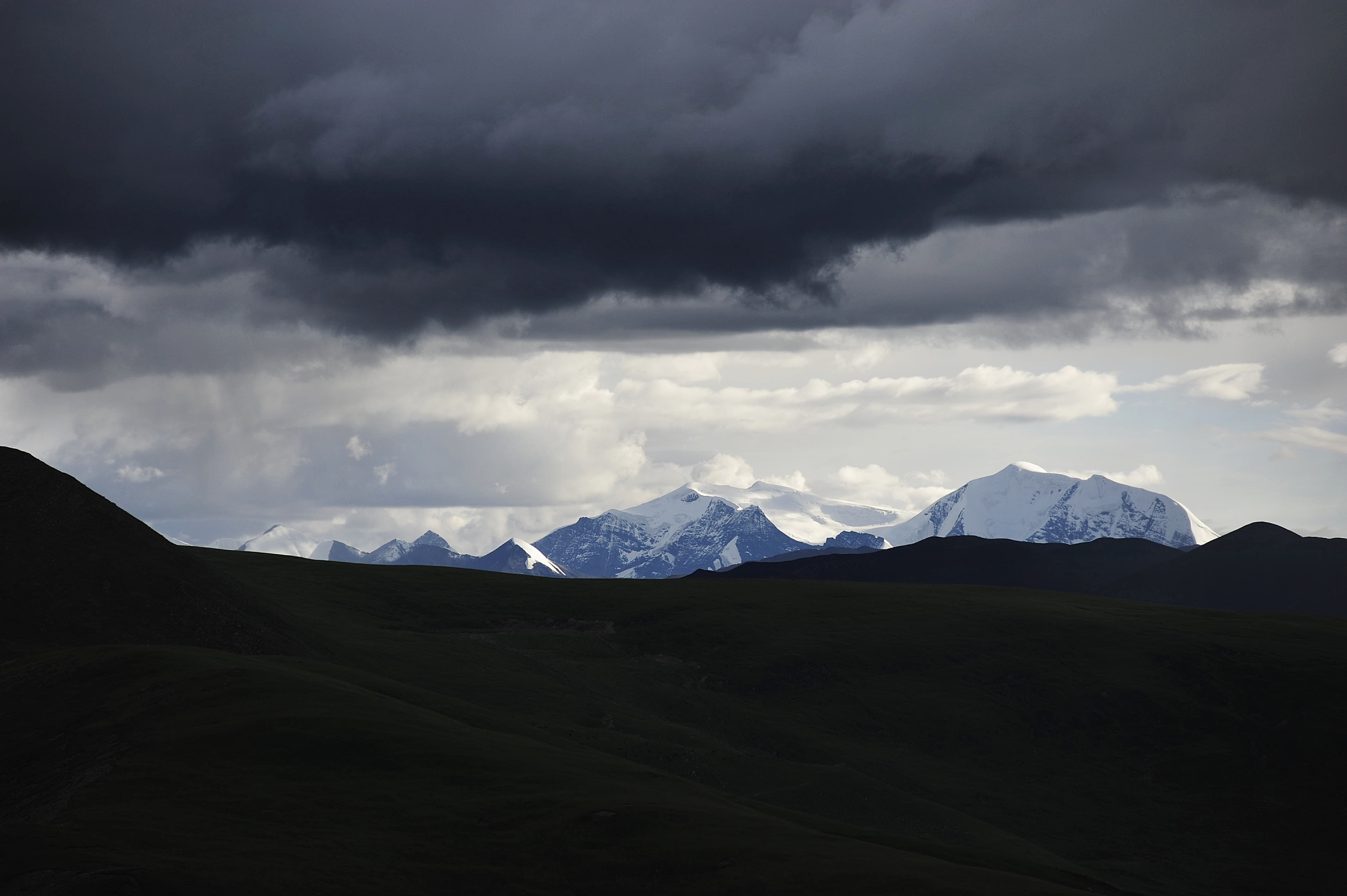
Turning around the top of the mountain, another round of rainbows crossed the mountains. I didn’t expect that the end of today’s journey would be so exciting!
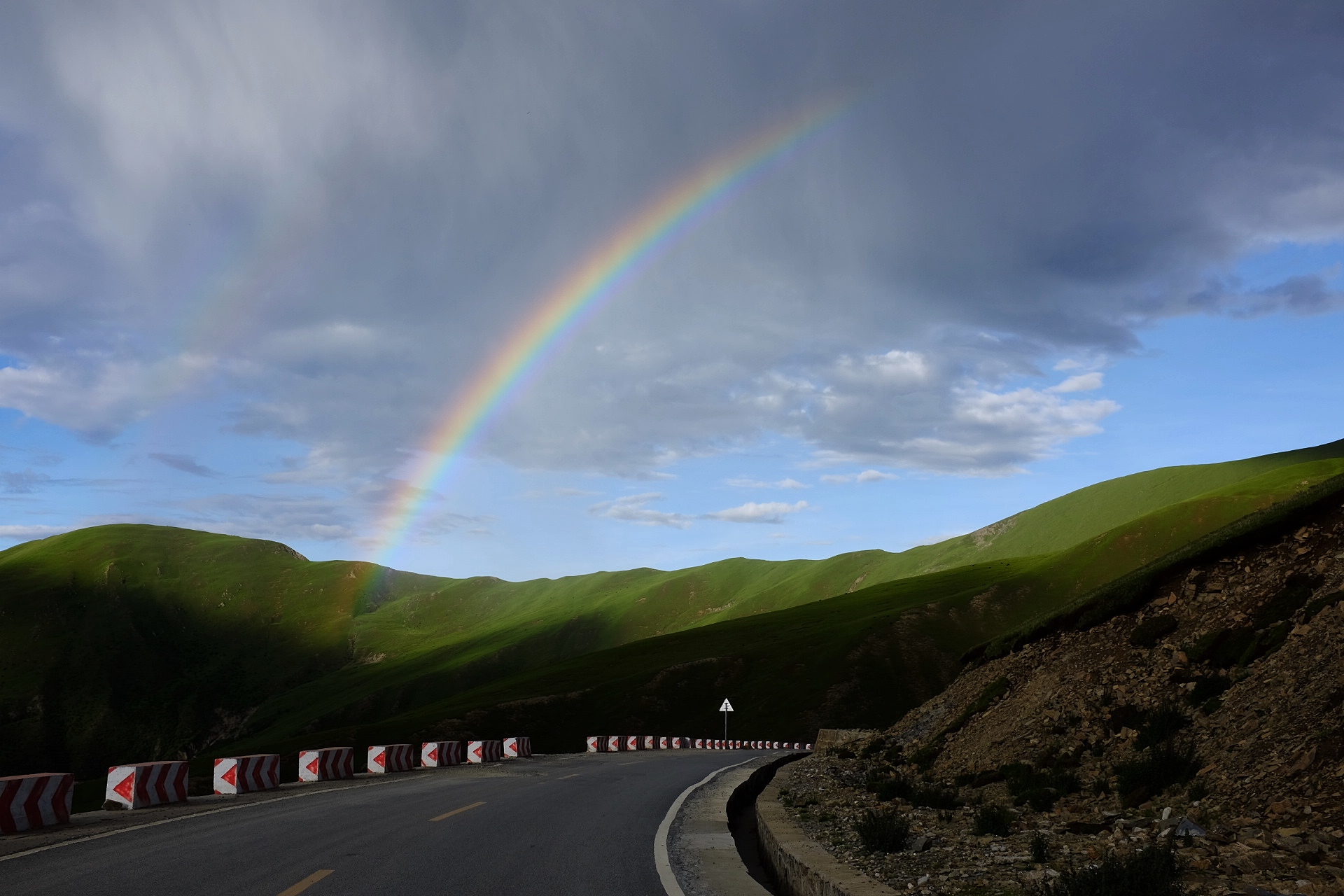
Night was about to fall, put away the camera and ran all the way to Lhasa. After crossing the Qushui Bridge, we stopped for dinner, continued running, and finally returned to the hotel at 10:30 pm. My daughter's last words before she fell asleep: Dad, tomorrow's breakfast, sunrise, and menstruation have nothing to do with me. I just want to sleep.
